Author Biographies 21
 Leopold von Sacher-Masoch
Leopold von Sacher-Masoch
1836-1895
Leopold Ritter von Sacher-Masoch (January 27, 1836-March 9, 1895) was an Austrian writer and journalist who gained renown for his romantic stories of Galician life. The term “masochism” is derived from his name.
During his lifetime, Sacher-Masoch was well known as a man of letters, a utopian thinker who espoused socialist and humanist ideals in his fiction and nonfiction. Most of his works remain untranslated into English. The novel, Venus in Furs, is his only book commonly available in English.
Masoch was born in the city then known as Lemberg, the capital of the Kingdom of Galicia and Lodomeria, at the time a province of the Austrian Empire (now Lviv, Ukraine), into the Roman Catholic family of an Austrian police director of Spanish descent and Charlotte von Masoch, a Ukrainian noblewoman. He began learning German at age 12. He studied law, history and mathematics at Graz University and, after graduating, moved back to Lemberg, where he became a professor.
His early, nonfiction publications dealt mostly with Austrian history. At the same time, Masoch turned to the folklore and culture of his homeland, Galicia. Soon he abandoned lecturing and became a free man of letters. Within a decade, his short stories and novels prevailed over his historical nonfiction works, though historical themes continued to imbue his fiction. From the 1860s to the 1880s, he published a number of volumes of Jewish Short Stories, Polish Short Stories, Galician Short Stories, German Court Stories and Russian Court Stories.
In 1869, Masoch conceived a grandiose series of short stories under the collective title, Legacy of Cain. Of the six planned volumes, only the first two were ever completed. By the middle of the 1880s, Masoch abandoned the Legacy of Cain. Nevertheless, the published volumes of the series included Masoch’s best-known stories and, of them, Venus in Furs (1869) is the most famous today.
In 1875, Masoch wrote The Ideals of Our Time, an attempt to give a portrait of German society during its Grunderzeit period.
In his late 50s, his mental health began to deteriorate and he spent the last years of his life under psychiatric care. According to official reports, he died in Lindheim, Germany, in 1895.
Source: http://en.wikipedia.org/wiki/Leopold_von_Sacher-Masoch
 Bibliography
Bibliography
Press your browser’s BACK button to return to the previous page.
 Thomas Sackville
Thomas Sackville
1536-1608
Thomas Sackville, 1st Earl of Dorset (1536-April 19, 1608) was an English statesman, poet, dramatist and Freemason. He was the son of Richard Sackville, a cousin to Anne Boleyn. He was a Member of Parliament and Lord High Treasurer.
He first entered Parliament as MP for Westmorland in 1558, followed by election as MP for East Grinstead in 1559 and Aylesbury in 1563.
Sackville was the author, with Thomas Norton, of the play, Gorboduc (1561), the first English drama to be written in blank verse. He also contributed to the 1563 edition of Mirror for Magistrates, with the poem, “Complaint of Henry, Duke of Buckingham.” Sackville’s first important work was the poem, “Induction.”
In 1591, Sackville became Chancellor of the University of Oxford. He succeeded William Cecil, Lord Burghley, as Lord Treasurer for life in 1599 and was a capable, if uninspired, financial manager. Sackville was created Baron Buckhurst, of Buckhurst in the County of Sussex, in 1567. Sackville acquired a large fortune through his real estate dealings in many counties, as well as his investments in the iron foundry business.
He died suddenly at the council table, having apparently suffered a stroke, referred to as “a dropsy on the brain.”
Source: http://en.wikipedia.org/wiki/Thomas_Sackville,_1st_Earl_of_Dorset
 Bibliography
Bibliography
Press your browser’s BACK button to return to the previous page.
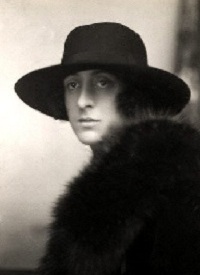 Vita Sackville-West
Vita Sackville-West
1892-1962
Victoria Mary Sackville-West was born on March 9, 1892, in Knole Castle, Kent, England, the only child of the third Baron Sackville and Lady Victoria Sackville. Vita Sackville-West was educated privately. She started writing novels and plays as a child.
In 1913, she married the diplomat Harold Nicolson and traveled with him to Persia, which is described in Passenger to Teheran (1926). Sackville-West won the Hawthornden Prize for her long poem, “The Land in 1927.”
She was a keen gardener at her home in Sissinghurst in Kent. She wrote a weekly gardening column for The Observer for many years. These were published as collections in 1951, 1953, 1955 and 1958.
Sackville-West wrote about 50 books but is best known for her novels – The Edwardians (1930), a sensitive portrait of an era, and All Passion Spent (1931), an account of an unusual marriage and aging.
She died on June 2, 1962, at Sissinghurst Castle, Kent.
Source: http://famouspoetsandpoems.com/poets/vita_sackville-west/biography
 Bibliography
Bibliography
Press your browser’s BACK button to return to the previous page.
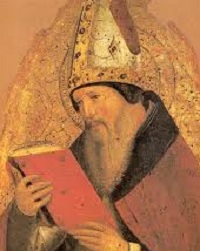 Saint Augustine
Saint Augustine
354-430 AD
Augustine of Hippo (November 13, 354 AD-August 28, 430 AD), also known as Augustine, St. Augustine, St. Austin, St. Augoustinos, Blessed Augustine or St. Augustine the Blessed, was Bishop of Hippo Regius (present-day Annaba, Algeria). He was a Latin philosopher and theologian from Roman Africa. His writings were very influential in the development of Western Christianity.
According to his contemporary, St. Jerome, Augustine “established anew the ancient Faith.” In his early years, he was heavily influenced by Manichaeism and afterward by the Neo-Platonism of Plotinus. After his conversion to Christianity and baptism in 387 AD, Augustine developed his own approach to philosophy and theology, accommodating a variety of methods and different perspectives. He believed that the grace of Christ was indispensable to human freedom and he framed the concepts of original sin and just war.
When the Western Roman Empire was starting to disintegrate, Augustine developed the concept of the Catholic Church as a spiritual City of God, distinct from the material Earthly City. His thoughts profoundly influenced the medieval worldview. Augustine’s City of God was closely identified with the Church, the community that worshipped God.
In the Catholic Church and the Anglican Communion, he is a saint and pre-eminent Doctor of the Church and the patron of the Augustinian religious order; his memorial is celebrated on August 28, the day of his death.
Source: http://en.wikipedia.org/wiki/Augustine_of_Hippo
 Bibliography
Bibliography
Press your browser’s BACK button to return to the previous page.
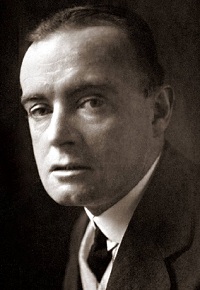 Saki (Hector Hugh Munro)
Saki (Hector Hugh Munro)
1870-1916
Hector Hugh Munro (December 18, 1870-November 13, 1916), better known by the pen name Saki, and also frequently as H.H. Munro, was a British writer whose witty, mischievous and sometimes macabre stories satirized Edwardian society and culture.
Beside his short stories, he wrote a full-length play, The Watched Pot, in collaboration with Charles Maude; two one-act plays; a historical study, The Rise of the Russian Empire, the only book published under his own name; a short novel, The Unbearable Bassington; the episodic The Westminster Alice and When William Came, subtitled A Story of London under the Hohenzollerns, a fantasy about a future German invasion of Britain.
The name Saki may be a reference to the cupbearer in the Rubaiyat of Omar Khayyam, a poem mentioned disparagingly by the eponymous character in “Reginald on Christmas Presents” and alluded to in a few other stories. It may, however, be a reference to the South American primate of the same name, “a small, long-tailed monkey from the Western Hemisphere” that is a central character in “The Remoulding of Groby Lington.”
Born in Akyab, Burma, when it was still part of the British Empire, Munro was the son of Charles Augustus Munro and Mary Frances Mercer (1843-72). Munro was educated at Pencarwick School in Exmouth, Devon, and at Bedford Grammar School. In 1893, he followed his father into the Indian Imperial Police, where he was posted to Burma. Two years later, having contracted malaria, he resigned and returned to England.
In England, he started his career as a journalist, writing for newspapers such as The Westminster Gazette, Daily Express, Bystander, Morning Post and Outlook.
In 1900, Munro’s first book appeared: The Rise of the Russian Empire, a historical study modeled upon Edward Gibbon’s The Decline and Fall of the Roman Empire.
From 1902 to 1908, Munro worked as a foreign correspondent for The Morning Post in the Balkans, Warsaw, Russia and Paris; he then gave that up and settled in London.
At the start of World War I, although 43 and officially overage, Munro refused a commission and joined the British Army Royal Fusiliers as an ordinary soldier. More than once he returned to the battlefield when officially still too sick or injured. In November 1916, he was sheltering in a shell crater near Beaumont-Hamel, France, when he was killed by a German sniper.
Source: http://en.wikipedia.org/wiki/Saki
 Bibliography
Bibliography
Press your browser’s BACK button to return to the previous page.
 Tayeb Salih
Tayeb Salih
1929-2009
Tayeb Salih (1929-February 18, 2009) was a Sudanese writer. Born in Karmakol, near the village of Al Dabbah in the Northern Province of Sudan, he studied at the University of Khartoum before leaving for the University of London in England. Coming from a background of small farmers and religious teachers, his original intention was to work in agriculture. However, excluding a brief spell as a schoolmaster before coming to England, his working life was in broadcasting.
For more than 10 years, Salih wrote a weekly column for the London-based Arabic language newspaper, al Majalla, in which he explored various literary themes. He worked for the BBC’s Arabic Service and later became director general of the Ministry of Information in Doha, Qatar. He spent the last 10 years of his working career with UNESCO in Paris, where he held various posts and was UNESCO’s representative in the Gulf States.
Salih achieved immediate acclaim when his novel, Season of Migration to the North, was first published in Beirut in 1966. Salih completed three other novels and a collection of short stories. His novella, The Wedding of Zein, was made into a drama in Libya and was a Cannes Festival prize-winning film by the Kuwaiti filmmaker, Khalid Siddiq, in the late 1970s.
Source: http://en.wikipedia.org/wiki/Tayeb_Salih
 Bibliography
Bibliography
Press your browser’s BACK button to return to the previous page.
 J.D. Salinger
J.D. Salinger
1919-2010
Jerome David “J. D.” Salinger (January 1, 1919-January 27, 2010) was an American author, best known for his 1951 novel, The Catcher in the Rye, as well as his reclusive nature. His last original published work was in 1965; he gave his last interview in 1980.
Raised in Manhattan, New York, Salinger began writing short stories while in secondary school and published several stories in the early 1940s before serving in World War II. Salinger published his first stories in Story magazine. In 1948, he published the critically acclaimed story, “A Perfect Day for Bananafish,” in The New Yorker magazine, which became home to much of his subsequent work. In 1951, Salinger released his novel, The Catcher in the Rye, an immediate popular success. His depiction of adolescent alienation and loss of innocence in the protagonist Holden Caulfield was influential, especially among adolescent readers.
The success of The Catcher in the Rye led to public attention and scrutiny: Salinger became reclusive, publishing new work less frequently. He followed Catcher with a short story collection, Nine Stories (1953), a volume containing a novella and a short story, Franny and Zooey (1961) and a volume containing two novellas, Raise High the Roof Beam, Carpenters and Seymour: An Introduction (1963). His last published work, a novella entitled Hapworth 16, 1924, appeared in The New Yorker on June 19, 1965.
Afterward, Salinger struggled with unwanted attention, including a legal battle in the 1980s. He made headlines around the globe in June 2009 after filing a lawsuit against another writer for copyright infringement resulting from that writer’s use of one of Salinger’s characters from The Catcher in the Rye.
Salinger died of natural causes on January 27, 2010, at his home in Cornish, New Hampshire.
Source: http://en.wikipedia.org/wiki/J._D._Salinger
 Bibliography
Bibliography
Press your browser’s BACK button to return to the previous page.
 Sonia Sanchez
Sonia Sanchez
1934-
Sonia Sanchez is an African-American poet most often associated with the Black Arts Movement. She has authored more than a dozen books of poetry, as well as plays and children’s books. She was a 1993 Pew Fellowships in the Arts.
Sanchez was born Wilsonia Benita Driver in Birmingham, Alabama, on September 9, 1934. When Sanchez was only a year old, her mother died and Sanchez was sent to live with her paternal grandmother. In 1955, she received a B.A. in Political Science from Hunter College, where she had also taken several creative writing courses. Later, Sanchez completed postgraduate work at New York University, where she studied poetry with Louise Bogan.
Sanchez has taught as a professor at eight universities and has lectured at more than 500 college campuses across the U.S., including Howard University. She advocated the introduction of Black Studies courses in California. Sanchez was the first to create and teach a course based on Black women and literature in the United States. She was the first Presidential Fellow at Temple University, where she began working in 1977 and she held the Laura Carnell chair until her retirement in 1999. She is currently a poet-in-residence at Temple University. She has read her poetry in Africa, the Caribbean, China, Australia, Europe, Nicaragua, Canada and Cuba. Sanchez also appeared on Bill Cosby’s CBS show in the 1990s.
She wrote many plays and books that had to do with the struggles and lives of Black Americans. Sanchez has edited two anthologies on Black literature, We Be Word Sorcerers: 25 Stories by Black Americans and 360 Degrees of Blackness Coming at You.
In 1969, Sanchez was awarded the P.E.N. Writing Award. She was awarded the National Education Association Award 1977-1988. She also won the National Academy and Arts Award and the National Endowment for the Arts Fellowship Award in 1978-1979. In 1985, she was awarded the American Book Award for Homegirls and Handgrenades. She has also been awarded the Community Service Award from the National Black Caucus of State Legislators, the Lucretia Mott Award, the Governor’s Award for Excellence in the Humanities and the Peace and Freedom Award from the Women’s International League for Peace and Freedom.
Source: http://en.wikipedia.org/wiki/Sonia_Sanchez
 Bibliography
Bibliography
Press your browser’s BACK button to return to the previous page.
 Carl Sandburg
Carl Sandburg
1878-1967
Carl Sandburg (January 6, 1878-July 22, 1967) was an American writer and editor, best known for his poetry. He won three Pulitzer Prizes, two for his poetry and another for a biography of Abraham Lincoln. H.L. Mencken called Carl Sandburg “indubitably an American in every pulse-beat.”
Sandburg was born in Galesburg, Illinois, to Swedish ancestry. At the age of 13, he left school and began driving a milk wagon. He then became a bricklayer and a farm laborer on the wheat plains of Kansas. After an interval spent at Lombard College in Galesburg, he became a hotel servant in Denver, then a coal-heaver in Omaha. He began his writing career as a journalist for The Chicago Daily News. Later, he wrote poetry, history, biographies, novels, children’s literature and film reviews. Sandburg also collected and edited books of ballads and folklore. He spent most of his life in the Midwest before moving to North Carolina.
Sandburg fought in the Spanish-American War with the 6th Illinois Infantry and participated in the invasion of Guanica, Puerto Rico, on July 25, 1898. He attended West Point for just two weeks, leaving after failing mathematics and a grammar exam. Sandburg returned to Galesburg and entered Lombard College but left without a degree in 1903.
He moved to Milwaukee, Wisconsin, and joined the Social Democratic Party. Sandburg served as a secretary to Emil Seidel, mayor of Milwaukee, from 1910 to 1912; Seidel was the first person to be elected mayor of a U.S. city on a socialist platform.
Sandburg met Lilian Steichen at the Social Democratic Party office in 1907 and they married the next year. Lilian’s brother was the photographer, Edward Steichen. Sandburg and his wife, whom he called Paula, raised three daughters.
Sandburg moved to Harbert, Michigan, and then suburban Chicago, Illinois. They lived in Evanston, Illinois, before settling at 331 S. York Street in Elmhurst, Illinois, from 1919 to 1930. Sandburg wrote three children’s books in Elmhurst: Rootabaga Stories, in 1922, followed by Rootabaga Pigeons (1923) and Potato Face (1930). Sandburg also wrote Abraham Lincoln: The Prairie Years, a two-volume biography in 1926; The American Songbag (1927); and a book of poems, Good Morning, America (1928) in Elmhurst. The family moved to Michigan in 1930. The Sandburg house at 331 S. York Street, Elmhurst, was demolished and the site is now a parking lot.
He moved to a Flat Rock, North Carolina estate, Connemara, in 1945, and lived there until his death in 1967.
Source: http://en.wikipedia.org/wiki/Carl_Sandburg
 Bibliography
Bibliography
Press your browser’s BACK button to return to the previous page.
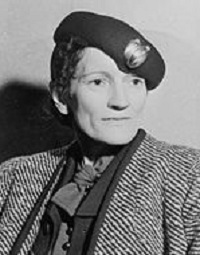 Mari Sandoz
Mari Sandoz
1896-1966
Mari Susette Sandoz (May 11, 1896-March 10, 1966) was a novelist, biographer, lecturer and teacher. She was one of Nebraska’s foremost writers and wrote extensively about pioneer life and the Plains Indians. She and has been occasionally referred to as Mari S. Sandz, Marie Sandoz and also Maris Sandz.
Sandoz was born near Hay Springs, Nebraska, the eldest of six children of Swiss immigrants, Jules and Mary Fehr Sandoz. Her father was a violent and domineering man who disapproved of her writing and reading. Her childhood was spent in hard labor on the home farm and she developed snow blindness in one eye after a day spent digging the family’s cattle out of a snowdrift.
She graduated from the eighth grade at the age of 17, secretly took the rural teachers’ exam and passed. She taught in nearby country schools without ever attending high school. She later moved to Lincoln, Nebraska.
For 16 years, Sandoz held a variety of low-paying jobs while writing – to almost no success – under her married name, Marie Macumber. Despite her lack of a high school diploma, she managed to enroll at the University of Nebraska, thanks to a sympathetic dean. During those years, Sandoz claimed she received more than a thousand rejection slips for her short stories.
She wrote her first novel, Old Jules, and began work on her next novel, Slogum House, a gritty and realistic tale about a ruthless Nebraska family. By January 1934, she returned to Lincoln and got a job at the Nebraska State Historical Society, where she became associate editor of Nebraska History magazine.
In 1935, she received word that her revised version of Old Jules had won a nonfiction contest conducted by Atlantic Press. Finally, her book would be published.
Sandoz’s subsequent novels, Slogum House (1937) and Capital City (1939), brought her notoriety of a different nature: Hate mail and threats. Sandoz moved to Denver, partly to escape the backlash and also for better research facilities. Later, she settled in New York so she could access the research material about the West and have proximity to her publishers.
In 1942, her monumental biography of the great Lakota leader Crazy Horse was published – Crazy Horse: The Strange Man of the Oglalas. Her meticulous attention to detail, her in-depth research and admiration of the Plains Indian culture is also noticeable in later works such as Cheyenne Autumn (1953), The Horsecatcher (1957) and The Story Catcher (1963).
Three other books of her Great Plains series – The Buffalo Hunters (1954), The Cattlemen (1958) and The Beaver Men (1964) – each develop the history of the West in relation to an animal species.
Sandoz kept writing even within a month of her death from bone cancer in 1966.
Source: http://en.wikipedia.org/wiki/Mari_Sandoz
 Bibliography
Bibliography
Press your browser’s BACK button to return to the previous page.
 Sapphire
Sapphire
1950-
Sapphire (born Ramona Lofton on August 4, 1950) is an American author and performance poet.
Lofton was born in Fort Ord, California, one of four children of an Army couple who relocated within the United States and abroad. Lofton dropped out of high school and moved to San Francisco, where she attained a GED and enrolled at the City College of San Francisco before dropping out to become a “hippie.” In the mid-1970s, Lofton attended the City College of New York and obtained an M.F.A. degree at Brooklyn College. Lofton held various jobs before starting her writing career, working as a performance artist as well as a teacher of reading and writing.
Lofton moved to New York City in 1977 and became heavily involved with poetry. She wrote, performed and eventually published her poetry during the height of the Slam Poetry movement in New York. Lofton took the name “Sapphire” because of its one-time cultural association with the image of a “belligerent Black woman,” and also because she said she could more easily picture that name on a book cover than her birth name.
Sapphire self-published her collection of poems, Meditations on the Rainbow, in 1987. Her first novel, Push, was unpublished before being discovered by literary agent Charlotte Sheedy, whose interest created demand and eventually led to a bidding war. Sapphire submitted the first 100 pages of Push to a publisher auction in 1995 and the highest bidder offered her $500,000 to finish the novel. The book was published in 1996.
In 2009, she was the recipient of a Fellow Award in Literature from United States Artists.
Sapphire currently lives and works in New York City.
Source: http://en.wikipedia.org/wiki/Sapphire_%28author%29
 Bibliography
Bibliography
Press your browser’s BACK button to return to the previous page.
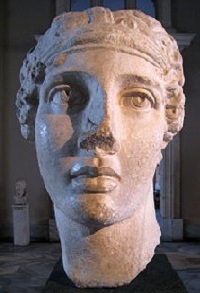 Sappho
Sappho
630-571 BC
Sappho was an Ancient Greek poet born on the island of Lesbos. Later Greeks included her in the list of nine lyric poets. Her birth was sometime between 630 and 612 BC and it is said that she died around 570 BC, but little is known for certain about her life. The bulk of her poetry, which was well-known and greatly admired throughout antiquity, has been lost but her immense reputation has endured through surviving fragments.
The only contemporary source for Sappho’s life is her own poetry and scholars are skeptical of reading it biographically. Later biographical accounts are also unreliable. Strabo indicates that Sappho was the contemporary of Alcaeus of Mytilene (born c. 620 BC) and Pittacus (c. 645-570 BC) and, according to Athenaeus, she was the contemporary of Alyattes of Lydia (c. 610-560 BC). The Suda, a 10th century Byzantine encyclopaedia, dates her to the 42nd Olympiad (612/608 BC), meaning either that she was born then or that this was her floruit. The versions of Eusebius state that she was famous by the first or second year of the 45th or 46th Olympiad (between 600 and 594 BC). Taken together, these references make it likely that she was born c. 620 BC or a little earlier.
Judging from the Parian Marble, she was exiled from Lesbos to Sicily sometime between 604 and 594 BC. If Fragment 98 of her poetry is accepted as biographical evidence and as a reference to her daughter, it may indicate that she had already had a daughter by the time she was exiled. If Fragment 58 is accepted as autobiographical, it indicates that she lived into old age. If her connection to Rhodopis is accepted as historical, it indicates that she lived into the mid-6th century BC.
Source: http://en.wikipedia.org/wiki/Sappho
 Bibliography
Bibliography
Press your browser’s BACK button to return to the previous page.
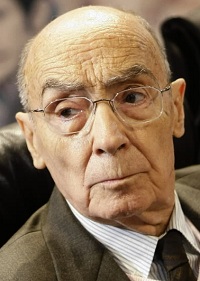 Jose Saramago
Jose Saramago
1922-2010
Jose de Sousa Saramago (November 16, 1922-June 18, 2010) was a Nobel Laureate Portuguese novelist, poet, playwright and journalist. His works, some of which can be seen as allegories, commonly present subversive perspectives on historic events, emphasizing the human factor.
Saramago was awarded the Nobel Prize for Literature in 1998. He founded the National Front for the Defence of Culture (Lisbon, 1992) with Freitas-Magalhaes and others.
Saramago died on June 18, 2010, aged 87, having spent the last few years of his life in Lanzarote, Spain.
Source: http://en.wikipedia.org/wiki/Jos%C3%A9_Saramago
 Bibliography
Bibliography
Press your browser’s BACK button to return to the previous page.
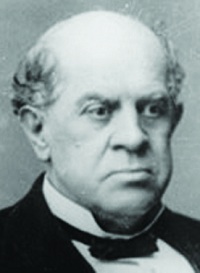 Domingo F. Sarmiento
Domingo F. Sarmiento
1811-1888
Domingo Faustino Sarmiento (February 15, 1811-September 11, 1888) was an Argentine activist, intellectual, writer, statesman and the seventh president of Argentina. His writing spanned a wide range of genres and topics, from journalism to autobiography, political philosophy and history. He was a member of a group of intellectuals known as the “Generation of 1837” who had a great influence on 19th century Argentina. He was particularly concerned with educational issues and was also an important influence on the region’s literature.
Sarmiento grew up in a poor but politically active family that paved the way for much of his future accomplishments. Between 1843 and 1850, he was frequently in exile and wrote in both Chile and in Argentina. His greatest literary achievement was Facundo, a critique of Juan Manuel de Rosas, that Sarmiento wrote while working for the newspaper, El Progreso, during his exile in Chile. The book brought him far more than just literary recognition; he expended his efforts and energy on the war against dictatorships, specifically that of Rosas, and contrasted enlightened Europe – a world where, in his eyes, democracy, social services and intelligent thought were valued – with the barbarism of the gaucho and especially the caudillo, the ruthless strongmen of 19th century Argentina.
While president of Argentina from 1868 to 1874, Sarmiento championed intelligent thought – including education for children and women – and democracy for Latin America. He also took advantage of the opportunity to modernize and develop train systems, a postal system and a comprehensive education system. He spent many years in ministerial roles on the federal and state levels, for which he traveled abroad and examined other education systems.
Sarmiento died in Asuncion, Paraguay, from a heart attack at the age of 77.
Source: http://en.wikipedia.org/wiki/Domingo_Faustino_Sarmiento
 Bibliography
Bibliography
Press your browser’s BACK button to return to the previous page.
 William Saroyan
William Saroyan
1908-1981
William Saroyan (Vilyam Saroyan; August 31, 1908-May 18, 1981) was an Armenian-American dramatist and author.
Saroyan was born in Fresno, California, to Armenian immigrants from Bitlis in the Ottoman Empire. At the age of three, after his father’s death, Saroyan was placed in the orphanage in Oakland, California, together with his brother and sister, an experience he later described in his writing. Five years later, the family reunited in Fresno, where his mother, Takoohi, secured work at a cannery. He continued his education on his own, supporting himself by taking odd jobs, such as working as an office manager for The San Francisco Telegraph Company.
Saroyan decided to become a writer after his mother showed him some of his father’s writings. A few of his early short articles were published in Overland Monthly. His first stories appeared in the 1930s. Among these was “The Broken Wheel,” written in 1933. The short story collection, My Name Is Aram (1940), was an international bestseller.
As a writer, Saroyan made his breakthrough in Story magazine with “The Daring Young Man on the Flying Trapeze” (1934), the title taken from the 19th century song of the same title.
Saroyan served in the U.S. Army during World War II. He was stationed in Astoria, Queens, spending much of his time at the Lombardy Hotel in Manhattan, far from Army personnel. In 1942, he was posted to London as part of a film unit. He narrowly avoided a court martial when his novel, The Adventures of Wesley Jackson, was seen as advocating pacifism.
Saroyan worked rapidly, hardly editing his text, and drinking and gambling away much of his earnings. From 1958 on, he mainly resided in a Paris apartment.
Saroyan published essays and memoirs in which he depicted the people he had met on travels in the Soviet Union and Europe. In 1952, Saroyan published The Bicycle Rider in Beverly Hills, the first of several volumes of memoirs.
Saroyan’s plays were drawn from deeply personal sources and often disregarded the convention that conflict is essential to drama. My Heart’s in the Highlands (1939), his first play, was a comedy about a young boy and his Armenian family. Saroyan is probably best remembered for his play, The Time of Your Life (1939), set in a waterfront saloon in San Francisco. It won a Pulitzer Prize. The Human Comedy was published in 1943.
In The Assyrian and Other Stories (1950) and The Laughing Matter (1953), Saroyan mixed allegorical elements within a realistic novel. The plays Sam Ego’s House (1949) and The Slaughter of the Innocents (1958) were not as successful as his pre-war plays. Many of Saroyan’s later plays, such as The Paris Comedy (1960), The London Comedy (1960) and Settled Out of Court (1969), premiered in Europe.
Saroyan died in Fresno, California, of prostate cancer at age 72.
Source: http://en.wikipedia.org/wiki/William_Saroyan
 Bibliography
Bibliography
Press your browser’s BACK button to return to the previous page.
 Jean-Paul Sartre
Jean-Paul Sartre
1905-1980
Jean-Paul Charles Aymard Sartre (June 21, 1905-April 15, 1980) was a French existentialist philosopher, playwright, novelist, screenwriter, political activist, biographer and literary critic. He was one of the leading figures in 20th century French philosophy and Marxism and was one of the key figures in the philosophy of existentialism. His work continues to influence fields such as Marxist philosophy, sociology, critical theory and literary studies.
He was awarded the 1964 Nobel Prize in Literature but refused it.
He died on April 15, 1980, in Paris from edema of the lung.
Source: http://en.wikipedia.org/wiki/Jean-Paul_Sartre
 Bibliography
Bibliography
Press your browser’s BACK button to return to the previous page.
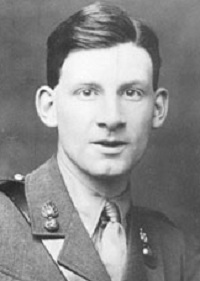 Siegfried Sassoon
Siegfried Sassoon
1886-1967
Siegfried Sassoon (September 8, 1886-1967) was born into a wealthy family in Kent. After studying at Marlborough College, Sassoon attended Clare College, Cambridge, but left without graduating in 1907 (he was subsequently made an Honorary Fellow in 1953).
For the following eight years, Sassoon lived the life of a country gentleman, spending his time hunting, playing cricket and golf and writing poetry, the latter of which he had privately printed and which made little critical impact.
With the onset of the war, and at the age of 28, Sassoon enlisted as a cavalry trooper in the Sussex Yeomanry before transferring to the Royal Welch Fusiliers as an officer in May 1915, where he met Robert Graves. He quickly developed the nickname “Mad Jack” for his fearless courage on the Western Front, often volunteering to lead night raids. Sassoon was awarded the Military Cross in June 1916 for assisting a wounded man back to British lines while under fire.
After being wounded in April 1917, Sassoon was sent back to England for recuperation. He had meanwhile developed increasingly angry feelings concerning the conduct of the war. This led him to publish, in The Times, a letter announcing his view that the war was being deliberately and unnecessarily prolonged by the authorities.
Sassoon narrowly avoided punishment by courts martial via the swift assistance of Robert Graves, who convinced the military review board (with Sassoon’s reluctant consent) that Sassoon was suffering from shell shock. Consequently, Sassoon was sent to Craiglockhart military hotel to recover. It was while at Craiglockhart that Sassoon met and struck up a friendship with Wilfred Owen. Sassoon subsequently edited and arranged publication of Owen’s work after the war. Returning to the war following a spell at Craiglockhart, Sassoon was posted to Palestine before returning to France, where he was again wounded and forced to return home to England.
In addition to publishing anti-war rhetoric in The Old Huntsman (1917) and Counter-Attack (1918), Sassoon wrote three volumes of classic fictional autobiography loosely based upon his immediate pre-war and war experiences: Memoirs of a Foxhunting Man (1928); Memoirs of an Infantry Officer (1930); and Sherston’s Progress (1936). He followed these with three volumes of actual autobiography: The Old Century (1938); The Weald of Youth (1942); and Siegfried’s Journey (1945).
Siegfried Sassoon died in 1967.
Source: http://www.firstworldwar.com/poetsandprose/sassoon.htm
 Bibliography
Bibliography
Press your browser’s BACK button to return to the previous page.
 Marjane Satrapi
Marjane Satrapi
1969-
Marjane Satrapi (born November 22, 1969, in Rasht, Iran) is an Iranian-born French contemporary graphic novelist, illustrator, animated film director and children’s book author.
Satrapi grew up in Tehran in a family involved with communist and socialist movements in Iran prior to the Iranian Revolution. She attended the Lycee Francais there and witnessed, as a child, the growing suppression of civil liberties and the everyday-life consequences of Iranian politics, including the fall of the Shah, the early regime of Ruhollah Khomeini and the first years of the Iran-Iraq War. She experienced an Iraqi air raid and Scud missile attacks on Tehran. According to Persepolis, one Scud hit the house next to hers, killing her friend.
In 1983, at the age of 14, Satrapi was sent to Vienna, Austria, by her parents to flee the Iranian regime. There she attended the Lycee Francais de Vienne. According to her autobiographical graphic novel, Persepolis, she stayed in Vienna through her high school years, living in friends’ homes, but spent two months living on the streets. After an almost deadly bout of pneumonia, she returned to Iran. She studied visual communication, eventually obtaining a master’s degree from Islamic Azad University in Tehran. Satrapi then moved to Strasbourg, France.
Satrapi is married to Mattias Ripa, a Swedish national, and lives in Paris.
Source: http://en.wikipedia.org/wiki/Marjane_Satrapi
 Bibliography
Bibliography
Press your browser’s BACK button to return to the previous page.
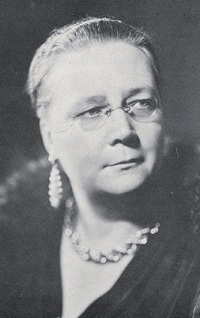 Dorothy L. Sayers
Dorothy L. Sayers
1893-1957
Dorothy Leigh Sayers was born at Oxford on June 13, 1893, the only child of the Rev. Henry Sayers, of Anglo-Irish descent. Her father was at the time headmaster of Christ Church Cathedral School and she was born in the headmaster’s house. She was brought up at Bluntisham Rectory, Cambridgeshire, and went to the Godolphin School, Salisbury, where she won a scholarship to Somerville College, Oxford. In 1915, she graduated with first-class honors in modern languages. Disliking the routine and seclusion of academic life, she joined Blackwell’s, the Oxford publishers, worked with her Oxford friend Eric Whelpton at L’Ecole des Roches in Normandy and, from 1922 until 1929, served as copywriter at the London advertising firm of Bensons.
In 1923, she published her first novel, Whose Body, which introduced Lord Peter Wimsey, her hero for 14 volumes of novels and short stories. She also wrote four other novels in collaboration and two serial stories for broadcasting. Writing full-time, she rose to be the doyen of crime writers and, in due course, president of the Detection Club. Her work, carefully researched and widely varied, included poetry, editing collections with her erudite introductions on the genre and translating Tristan of Thomas from Medieval French.
Gaudy Night was to be the culmination of the Wimsey saga, but her friend Muriel St. Clare Byrne persuaded her to collaborate in putting Lord Peter on the stage in Busman’s Honeymoon. The play was successfully launched in December 1936 and she gave up crime writing, except for the book of the play and three short stories. With her new financial security she turned thankfully to the work for which she had been trained.
The stage fascinated her. She had already been asked to write a play, The Zeal of Thy House, for the Canterbury Festival. She followed this with six more, up to the Colchester Festival play, The Emperor Constantine, in 1951. The most momentous was The Man Born to Be King, written for broadcasting in children’s hour at the request of the BBC.
She found her culminating role after the war. Dante’s writings had long intrigued her. Now she taught herself old Italian and made a translation in terza rima of The Divine Comedy unmatched for its popularity and the clarity of its notes. She also found time to finish her translation of the Song of Roland from the old French. But she unexpectedly died from heart failure on December 17, 1957, while engaged on Dante’s third volume, Paradiso.
Source: http://www.sayers.org.uk/dorothy.html
 Bibliography
Bibliography
Press your browser’s BACK button to return to the previous page.
 John Sayles
John Sayles
1950-
John Thomas Sayles (born September 28, 1950) is an American independent film director, screenwriter and author.
Sayles was born in Schenectady, New York, the son of Mary (nee Rausch), a teacher, and Donald John Sayles, a school administrator.
Sayles funded his first film, Return of the Secaucus 7, with $30,000 he had in the bank from writing scripts. In 1983, after the films Baby It’s You and Lianna, Sayles received a MacArthur Fellowship. He used the money to partially fund the fantasy, The Brother from Another Planet.
In 1989, he created and wrote the pilot episode for the short-lived television show, Shannon’s Deal.
Sayles has funded most of his films by writing genre scripts such as Piranha, Alligator, The Howling and The Challenge.
Sayles gets the rest of his funding by working as a script doctor; he did rewrites for Apollo 13 and Mimic. While working on one such genre script, he was inspired to write E.T. the Extra-Terrestrial. He was later commissioned to write the script for Jurassic Park IV.
He has written and directed his own films, including Lone Star, Passion Fish, Eight Men Out, The Secret of Roan Inish and Matewan.
His novel, A Moment in the Sun, was released in 2011.
Source: http://en.wikipedia.org/wiki/John_Sayles
 Bibliography
Bibliography
Press your browser’s BACK button to return to the previous page.
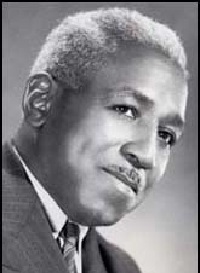 George Schuyler
George Schuyler
1895-1977
George Samuel Schuyler (February 25, 1895-August 31, 1977) was an African-American author, journalist and social commentator known for his conservative views.
Schuyler was born in Providence, Rhode Island, to George Francis (a chef) and Eliza Jane (Fischer) Schuyler. Schuyler’s paternal great-grandfather was believed to be a black soldier who worked for Philip Schuyler, whose surname the soldier adopted. Schuyler’s maternal great-grandmother was a Malagasy servant who married a ship captain from Saxe-Coburg in Bavaria. Schuyler’s father died when he was young. George spent his early years in Syracuse, New York, where his mother moved their family after she remarried. In 1912, Schuyler, at age 17, enlisted in the U.S. Army and was promoted to the rank of First Lieutenant, serving in Seattle and Hawaii. He went AWOL after a Greek immigrant, who was tasked to shine his shoes, refused to do so because of Schuyler’s skin color. After turning himself in, Schuyler was convicted by a military court and sentenced to five years in prison. He was released after nine months as a model prisoner.
After his discharge, Schuyler moved to New York City, where he worked as a handyman, doing odd jobs. During this period, he read many books, which sparked his interest in socialism. He lived for a period in the Phyllis Wheatley Hotel, run by Black separatist Marcus Garvey’s Universal Negro Improvement Association (UNIA), and attended UNIA meetings. Schuyler dissented from Garvey’s philosophy and began writing about his perspectives. By the mid-1920s, Schuyler had come to disdain socialism. Schuyler believed that socialists were frauds who actually cared very little about negroes.
In 1926, The Courier sent Schuyler on an editorial assignment to the South, where he developed his journalist’s routine: Ride with a cab driver, then chat with a local barber, bellboy, landlord and policeman. These encounters would precede interviews with local town officials. In 1926, Schuyler became the chief editorial writer at The Courier. Also that year, he published an article entitled “The Negro-Art Hokum” in The Nation. In 1929, Schuyler’s pamphlet, “Racial Inter-Marriage in the United States,” called for solving the country’s race problem through miscegenation, which was then illegal in most states.
In 1931, Schuyler published his novel, Black No More, which tells the story of a scientist who makes a machine that turns black people to white. Between 1936 and 1938 in The Pittsburgh Courier, he published a weekly serial, later collected as a novel, Black Empire. Schuyler also published the highly controversial book, Slaves Today: A Story of Liberia, a novel about the slave trade created by freed American slaves who settled Liberia in the 1820s.
Between 1933 and 1939, Schuyler published scores of short stories in The Pittsburgh Courier under various pseudonyms. Schuyler’s articles also appeared in magazines, including The Nation, Negro Digest, American Mercury and Common Ground.
From 1937 to 1944, Schuyler was the business manager of the NAACP. During the McCarthy era, Schuyler moved sharply to the political right and contributed to American Opinion, the journal of the John Birch Society. In 1947, he published The Communist Conspiracy against the Negroes. In 1966, Schuyler was dismissed from The Pittsburgh Courier for his opposition to Martin Luther King Jr.’s being awarded the Nobel Peace Prize.
Schuyler’s conservatism was a counterpoint to the predominant liberal philosophy of the civil rights movement in the 1960s and 1970s. Outlets for Schuyler’s written work diminished until he was an obscure figure at the time of his death in 1977 in New York City.
Schuyler’s autobiography, Black and Conservative, was published in 1966.
Source: http://en.wikipedia.org/wiki/George_Schuyler
 Bibliography
Bibliography
Press your browser’s BACK button to return to the previous page.
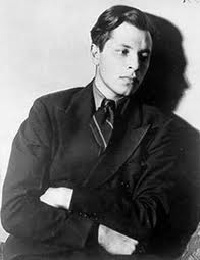 Delmore Schwartz
Delmore Schwartz
1913-1966
Delmore Schwartz (December 8, 1913-July 11, 1966) was an American poet and short story writer.
Schwartz was born and raised in Brooklyn, New York. His parents, Harry and Rose, separated when Schwartz was nine and their divorce had a profound effect on him. Later, in 1930, another traumatizing event occurred when Schwartz’s father suddenly died at the age of 49. Though Harry had accumulated a good deal of wealth from his dealings in the real estate business, Delmore only inherited a few thousand dollars due to the shady dealings of the dishonest executor of his father’s estate.
Schwartz spent time at Columbia University and the University of Wisconsin before finally graduating from New York University in 1935. He then went on to do some graduate work in philosophy at Harvard University, where he studied with the philosopher Alfred North Whitehead, but Schwartz left without receiving a degree and returned to New York. Soon thereafter, he made his parents’ disastrous marriage the subject of his most famous short story, “In Dreams Begin Responsibilities,” which was published in 1937 in the first issue of Partisan Review. This story and other short stories and poems were collected and released in his first book, also entitled In Dreams Begin Responsibilities, in 1938. The book was well received and made him a well-known figure in New York intellectual circles. His work received praise from some of the most respected people in literature and he was considered one of the most gifted writers of his generation.
For the next couple of decades, he continued to publish stories, poems and plays and edited both The Partisan Review, from 1943 to 1955, and The New Republic.
In 1959, he became the youngest-ever recipient of the Bollingen Prize, awarded for a collection of poetry he published that year, Summer Knowledge: New and Selected Poems. He taught creative writing at six different universities, including Syracuse, Princeton and Kenyon College.
He was unable to repeat or build on his early successes later in life as a result of alcoholism and mental illness. His last years were spent in reclusion at the Columbia Hotel in New York City. In fact, Schwartz was so isolated from the rest of the world that, when he died on July 11, 1966, at age 52, of a heart attack, two days passed before his body was identified at the morgue.
Source: http://en.wikipedia.org/wiki/Delmore_Schwartz
 Bibliography
Bibliography
Press your browser’s BACK button to return to the previous page.
 Martin Scorsese
Martin Scorsese
1942-
Martin Scorsese was born on November 17, 1942, in Flushing, New York. He was the younger of two sons born to Charles and Catherine Scorsese, of Sicilian descent. His father was a clothes presser and his mother was a seamstress.
Originally, Scorsese wanted to become a priest. He attended a Catholic grade school and entered a junior seminary but left after one year. He then entered the Film School at New York University. Scorsese’s It’s Not Just You, Murray! won the Producer’s Guild Award for best student film in 1964. He also received awards for other short films that he made as an undergraduate.
After graduating, Scorsese remained at New York University as an instructor in basic film technique and criticism while beginning his career as a director. His first feature film, Who’s That Knocking at My Door, was released in 1969.
In the early 1970s, Scorsese moved to Hollywood, California, and met the producer and director Roger Corman, who asked him to direct a sequel to his Bloody Mama. Instead, Scorsese directed Corman’s Boxcar Bertha, a 1972 gangster film similar to Bonnie and Clyde. Next on the filmmaker’s career path was a return to familiar turf in Mean Streets (1973).
Scorsese also began directing documentaries in the 1970s. These included Italian-American, a profile of his parents released in 1974, and American Boy, a 1978 account of a friend who had immersed himself in the drug culture of the 1960s. He veered away from his usual movie themes with Alice Doesn’t Live Here Anymore in 1975. Scorsese followed with his first major hit, Taxi Driver (1976). The director’s nostalgic look at his city after World War II, called New York, New York, proved a critical failure in 1977.
Scorsese returned to documentaries in the late 1970s by directing a film of the final concert of the rock group, The Band, entitled The Last Waltz. Actor Robert De Niro convinced Scorsese to direct Raging Bull, followed by The King of Comedy (1983). His next directorial success was After Hours.
Box-office success greeted Scorsese’s The Color of Money in 1986. His next release was 1988’s The Last Temptation of Christ. Scorsese returned to more familiar cinematic ground in 1990 with Goodfellas.
Scorsese surprised the film community by his filming of Age of Innocence, the Edith Wharton novel set in 19th century New York City. He jumped back to modern times with a tale of greed and deception in Las Vegas with his 1995 release, Casino. Scorsese’s next film, Kundun, the story of Tibet’s exiled spiritual leader, the Dalai Lama, was released in September 1997.
Source: https://en.wikipedia.org/wiki/Martin_Scorsese
 Bibliography
Bibliography
Press your browser’s BACK button to return to the previous page.
 Ridley Scott
Ridley Scott
1937-
Ridley Scott has had his highs and lows as a filmmaker, but there’s no question that he has directed some of cinema’s modern classics, including Alien (1979) and Blade Runner (1982).
Scott began as a set designer and then director for BBC television in the mid-1960s. He formed his own production company to make TV commercials and quickly became known for his lush visual style and technical virtuosity. His first feature film, The Duellists (1977), was impressive enough that he got the job to direct Alien, which went on to become a box-office smash. Although Blade Runner was not a hit at the time, it has since become a classic of the sci-fi genre.
His movies during the ’80s are generally considered misfires (1985’s Legend, 1987’s Someone to Watch Over Me and 1989’s Black Rain), but Scott bounced back with the 1991 “feminist buddy movie” Thelma and Louise, for which he earned his first Oscar nomination. Since then, he has received two more Oscar nominations, for Gladiator (2000) and Black Hawk Down (2001).
As a producer, Scott has won two Emmys for the television movies RKO 281 (1999) and The Gathering Storm (2002). His other feature films include White Squall (1996), G.I. Jane (1997), Matchstick Men (2003) and Kingdom of Heaven (2005).
Scott directed the much-ballyhooed 1984, the television commercial introducing the Macintosh Apple computer.
Source: https://en.wikipedia.org/wiki/Ridley_Scott
 Bibliography
Bibliography
Press your browser’s BACK button to return to the previous page.
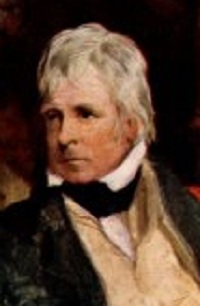 Sir Walter Scott
Sir Walter Scott
1771-1832
Sir Walter Scott, 1st Baronet (August 15, 1771-September 21, 1832) was a prolific Scottish historical novelist and poet, popular throughout Europe during his time. Famous titles include Ivanhoe, Rob Roy, “The Lady of The Lake,” Waverley, The Heart of Midlothian and The Bride of Lammermoor.
Born in College Wynd in the Old Town of Edinburgh, the son of a solicitor, Scott survived a childhood bout of polio in 1773 that left him lame. To cure his lameness, he was sent in 1773 to live in the rural Borders region at his grandparents’ farm at Sandyknowe, adjacent to the ruin of Smailholm Tower, the earlier family home.
Scott began studying classics at the University of Edinburgh in November 1783, at the age of only 12, a year or so younger than most of his fellow students. In March 1786, he began an apprenticeship in his father’s office to become a Writer to the Signet. When it was decided that he would become a lawyer, he returned to the university to study law, first taking classes in Moral Philosophy and Universal History in 1789-90.
At the age of 25, he began dabbling in writing, translating works from German, his first publication being rhymed versions of ballads by Burger in 1796. He then published a three-volume set of collected Scottish ballads, The Minstrelsy of the Scottish Border. This was the first sign of his interest in Scottish history from a literary standpoint.
After Scott had founded a printing press, his poetry, beginning in 1805 with “The Lay of the Last Minstrel,” brought him fame. He published other poems over the next 10 years, including the popular “The Lady of the Lake,” printed in 1810 and set in the Trossachs. Another work from this period, “Marmion,” produced some of his most quoted (and mis-attributed) lines. In 1809, his sympathies led him to become a co-founder of The Quarterly Review, a review journal to which he made several anonymous contributions.
When the press became embroiled in pecuniary difficulties, Scott set out in 1814 to write a cash-cow. The result was Waverley, a novel that did not name its author. In 1819, he broke away from writing about Scotland with Ivanhoe, a historical romance set in 12th century England. It, too, was a runaway success and he wrote several books along the same lines, including The Bride of Lammermoor.
Beginning in 1825, he went into dire financial straits as his company nearly collapsed. Rather than declare bankruptcy, he placed his home, Abbotsford House, and income into a trust belonging to his creditors and proceeded to write his way out of debt. He kept up his prodigious output of fiction (as well as producing a biography of Napoleon Bonaparte) until 1831.
By then his health was failing and he died at Abbotsford in 1832.
Source: http://en.wikipedia.org/wiki/Walter_Scott
 Bibliography
Bibliography
Press your browser’s BACK button to return to the previous page.
 Winfried Georg Sebald
Winfried Georg Sebald
1944-2001
W.G. (Winfried Georg) Maximilian Sebald (May 18, 1944-December 14, 2001) was a German writer and academic.
Sebald grew up in Wertach, Bavaria, one of four children of Rosa and Georg Sebald. From 1948 to 1963, he lived in Sonthofen. Sebald studied German literature at the University of Freiburg, where he received a degree in 1965. He was a research student at the University of Manchester from 1966 to 1969. He returned to Germany for a year, hoping to work as a teacher, but could not settle. In 1970, he became a lecturer at the University of East Anglia (UEA). In 1987, he was appointed to a chair of European literature at UEA. In 1989, he became the founding director of the British Centre for Literary Translation. He lived at Wymondham and Poringland while at UEA.
In On the Natural History of Destruction (1997), he wrote a major essay about the wartime bombing of German cities and the absence in German writing of any real response. His concern with the Holocaust is expressed in several books delicately tracing his own biographical connections with Jews.
Sebald was also the author of three books of poetry: For Years Now with Tess Jaray (2001), After Nature (2002) and Unrecounted (2004).
Sebald died in a car crash near Norwich in December 2001, perhaps following a heart attack.
Source: http://en.wikipedia.org/wiki/W._G._Sebald
 Bibliography
Bibliography
Press your browser’s BACK button to return to the previous page.
 Alice Sebold
Alice Sebold
1968-
Alice Sebold (born September 6, 1963) is an American writer. She has published three books: Lucky (1999), The Lovely Bones (2002) and The Almost Moon (2007).
Sebold was born in Madison, Wisconsin. She grew up in the suburbs of Philadelphia and graduated from Great Valley High School in Malvern, Pennsylvania, in 1980. She then enrolled in Syracuse University. Sebold returned home to Pennsylvania to live with her family for the summer before beginning her sophomore year at Syracuse. After some months at home, Sebold returned to Syracuse to finish her bachelor’s degree and to study writing.
Following graduation from Syracuse, Sebold went to the University of Houston in Texas for graduate school. She did not complete her graduate studies, likely due to drug use. Then she moved to Manhattan and lived there for 10 years. She held several jobs as a waitress and tried to pursue her writing career. Sebold left the city and moved to southern California, where she became a caretaker of an arts colony, earning $386 a month and living in a cabin in the woods without electricity. She would write under a propane lamp. In 1995, Sebold applied to graduate school at University of California, Irvine (UCI).
While at UCI, Sebold began writing Lucky, a memoir of her rape while attending Syracuse University. The police had told Sebold that she was lucky to be alive; not long before Sebold’s attack, another young woman had been killed and dismembered in the same tunnel. The story began while she was writing a 10-page assignment, though Sebold eventually wrote 40 pages for her class.
After Lucky, Sebold published the bestselling novel, The Lovely Bones. Sebold’s second novel, The Almost Moon, continued what The New Yorker called “Sebold’s fixation on terror.”
Source: http://en.wikipedia.org/wiki/Alice_Sebold
 Bibliography
Bibliography
Press your browser’s BACK button to return to the previous page.
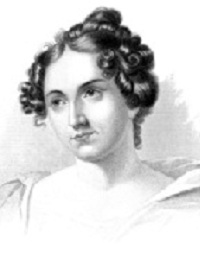 Catharine Maria Sedgwick
Catharine Maria Sedgwick
1789-1867
Catharine Maria Sedgwick (December 28, 1789-July 31, 1867), was an American novelist of what is now referred to as “domestic fiction.” She promoted republican motherhood.
Sedgwick was born in Stockbridge, Massachusetts. Her mother was Pamela Dwight of the New England Dwight family, daughter of General Joseph Dwight and granddaughter of Ephraim Williams, founder of Williams College. Her father was Theodore Sedgwick, a prosperous lawyer and successful politician. He was later elected Speaker of the U.S. House of Representatives and in 1802 was appointed a justice of the Massachusetts Supreme Judicial Court.
As a child, Sedgwick was cared for by Elizabeth Freeman, a former slave whose freedom her father helped gain by arguing her case in county court in 1781. After winning her freedom, Freeman accepted the Sedgwicks’ offer to work for them for wages. As a young woman, Sedgwick attended a finishing school in Boston to complete her education. One of her schoolmates, Susan Anne Ridley Sedgwick (1788-1867), would become her sister-in-law and a published author.
As a young woman, Sedgwick took charge of a school in Lenox. She converted from Calvinism to Unitarianism, which led her to write a pamphlet denouncing religious intolerance. This further inspired her to write her first novel, A New-England Tale.
With her work much in demand, from the 1820s to the 1850s, Sedgwick made a good living writing short stories for a variety of periodicals.
She died in 1867.
Source: http://en.wikipedia.org/wiki/Catharine_Sedgwick
 Bibliography
Bibliography
Press your browser’s BACK button to return to the previous page.
 Lucius Annaeus Seneca
Lucius Annaeus Seneca
c. 4 BC-65 AD
Lucius Annaeus Seneca (ca. 4 BC-65 AD) was a Roman Stoic philosopher, statesman, dramatist and, in one work, humorist of the Silver Age of Latin literature. He was tutor and later advisor to emperor Nero.
He was born in Cordoba, in the Baetica, the highly romanized southern province of Spain. He was the second son of Helvia and Lucius Annaeus Seneca, the wealthy rhetorician known as Seneca the Elder. At Rome, he was trained in rhetoric and was introduced to Hellenistic Stoic philosophy. Seneca’s own writings describe his poor health. At some stage, he was nursed by his aunt; as she was in Egypt from 16 to 31 AD, he must have at least visited and perhaps lived there for a period. Seneca and his aunt returned to Rome in 31 and she helped him in his campaign for his first magistracy.
Caligula began his first year as emperor in 38 and there was a severe conflict between him and Seneca; the emperor is said to have spared his life only because he expected Seneca’s natural life to be near its end. In 41, Claudius succeeded Caligula, and then, at the behest of his third wife, Valeria Messalina, banished Seneca to Corsica on a charge of adultery with Caligula’s sister, Julia Livilla. Seneca spent his exile in philosophical and natural study and wrote the Consolations, fulfilling a request for the text made by his sons for the sake of posterity. In 49, Claudius’ fourth wife, Agrippina the Younger, had Seneca recalled to Rome to tutor her son Nero, then 12 years old; on Claudius’ death in 54, she secured recognition of Nero, rather than Claudius’ son Britannicus, as emperor.
From 54 to 62, Seneca acted as Nero’s advisor, together with the praetorian prefect, Sextus Afranius Burrus. Seneca’s influence was said to be especially strong in the first year. However, over time, Seneca and Burrus lost their influence over Nero. In 59, they reluctantly agreed to Agrippina’s murder and, afterward, Seneca wrote a dishonest exculpation of Nero to the Senate. With the death of Burrus in 62 and accusations of embezzlement, Seneca retired and devoted his time again to study and writing.
In 65, Seneca was caught up in the aftermath of the Pisonian conspiracy, a plot to kill Nero. Although it is unlikely that he conspired, he was ordered by Nero to kill himself. He followed tradition by severing several veins in order to bleed to death. His age and diet were blamed for slow loss of blood and extended pain rather than a quick death; taking poison was also not fatal. After dictating his last words to a scribe, and with a circle of friends attending him in his home, he immersed himself in a warm bath, which was expected to speed blood flow and ease his pain.
Source: http://en.wikipedia.org/wiki/Seneca_the_Younger
 Bibliography
Bibliography
Press your browser’s BACK button to return to the previous page.
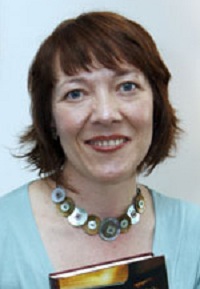 Diane Setterfield
Diane Setterfield
1964-
Diane Setterfield (born August 22, 1964) is a British author whose 2006 debut novel, The Thirteenth Tale, became a New York Times No. 1 bestseller. It is written in the Gothic tradition, with echoes of Jane Eyre and Wuthering Heights.
Before writing, Setterfield studied French Literature at Bristol University and taught at numerous public and private schools before leaving academia in the late 1990s. She lives in North Yorkshire, England, with her husband and four cats and, as of 2006, was working on a second novel.
Source: http://en.wikipedia.org/wiki/Diane_Setterfield
 Bibliography
Bibliography
Press your browser’s BACK button to return to the previous page.
 Samuel Sewall
Samuel Sewall
1652-1730
Samuel Sewall was born in Bishopstoke, Hampshire, England, on March 28, 1652, the son of Henry and Jane Sewall (nee Dummer), and grandson of Henry Sewall, the mayor of Coventry, England. He emigrated with his parents from England to the Massachusetts Colony in 1661, where they settled in Newbury, Massachusetts. Sewall grew up along the Parker River and Plum Island Sound. Like other local boys he attended school at the James Noyes House, receiving his primary education from the Reverend Thomas Parker, M.A. A devout Puritan, he later moved to Boston to attend Harvard University (graduating in 1671), hoping to study for the ministry, but he eventually left to pursue a career in business.
He also entered local politics and was elevated to the position of assistant magistrate in the judiciary that, in 1692, judged people in Salem accused of witchcraft. Sewall was perhaps most remarkable among the magistrates involved in the trials in that he was the only magistrate who, some years later, publicly regretted his role, going so far as to call for a public day of prayer, fasting and reparations. In Salem, Sewall’s brother, Stephen, had opened up his home to one of the initially afflicted children, Betty Parris, daughter of Salem Village’s Reverend Samuel Parris, and shortly afterward Betty’s “afflictions” appear to have subsided.
Apart from his involvement in the trials, Sewall could be very liberal in his views. In The Selling of Joseph (1700), for instance, he came out strongly against slavery, making him one of the earliest colonial abolitionists. There he argued: “Liberty is in real value next unto Life: None ought to part with it themselves, or deprive others of it, but upon the most mature Consideration.”
He regarded “man-stealing as an atrocious crime which would introduce amongst the English settlers people who would remain forever restive and alien,” but he also believed that “There is such a disparity in their Conditions, Colour, Hair, that they can never embody with us, and grow up into orderly Families, to the Peopling of the Land.”
Although holding such segregationist views, he maintained that: “These Ethiopians, as black as they are; seeing they are the Sons and Daughters of the First Adam, the Brethren and Sisters of the Last ADAM, and the Offspring of God; They ought to be treated with a Respect agreeable.”
His 1725 essay, “Talitha Cumi,” refers to the “right of women.” It was republished for the first time since 1725 in the appendix to the most recent biography of Sewall.
His Journal, kept from 1673 to 1729, describes his life as a Puritan against the changing tide of colonial life as the devoutly religious community of Massachusetts gradually adopted more secular attitudes and emerged as a liberal, cosmopolitan-minded community. As such, the diary is an important work for understanding the transformation of the colony in the days leading to the American Revolution.
In 1717, Sewall was appointed chief justice of Massachusetts. Sewall married three times. His first wife was Hannah Hull, daughter of John Hull, mint-master of the Massachusetts Bay Colony, whom he married on February 28, 1676, in Boston. She was mother of all 14 of his children and died in 1717. Two years later, in 1719, Sewall married Abigail (Melyen) Woodmansey Tilley, who died seven months later. In 1722, Sewall married Mary (Shrimpton) Gibbs, who survived him.
Sewall died in Boston, Massachusetts, on January 1, 1730, at age 77, and was interred in the family tomb at the Granary Burying Ground, Tremont Street, Boston. His great-grandson, Samuel Sewall, would later represent Massachusetts in the U.S. Congress.
Source: http://en.wikipedia.org/wiki/Samuel_Sewall
 Bibliography
Bibliography
Press your browser’s BACK button to return to the previous page.
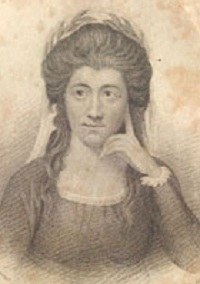 Anna Seward
Anna Seward
1747-1809
Anna Seward was a poet and a prolific correspondent of the late 18th century. She was the daughter of Thomas Seward, the canon of Lichfield, and Elizabeth Hunter. Elizabeth died and left Thomas a widower – an event that left Anna without a mother but with the freedom not to marry. As the eldest daughter, it was her responsibility to care for her father, so she stayed at Lichfield and tended to him through his senility. When he died, she was in her 40s and no longer under any social obligation to marry.
Anna was well-educated, known for her lively, generous nature and her unconventional ideas. She was educated at home and read French, Italian and Latin. Lichfield was one of the major provincial literary centers of the 18th century and Seward’s was a literary household. She began writing poetry when young, publishing in periodicals and circulating her poems among friends.
Seward’s correspondence made her just as well-known as her poetry. She had a large circle of literary correspondents, a circle she widened on each of her forays outside of Lichfield. Her letters show a less conventional side than appears in her poetry, revealing her direct nature and somewhat feminist stance. After her death (and at her request) her letters were published in six volumes.
Source: http://www.sappho.com/poetry/a_seward.html
 Bibliography
Bibliography
Press your browser’s BACK button to return to the previous page.
 Anna Sewell
Anna Sewell
1820-1878
Anna Mary Sewell (March 30, 1820-April 25, 1878) was an English novelist, best known as the author of the classic novel, Black Beauty.
Sewell was born in Great Yarmouth, Norfolk, England, into a devoutly Quaker family. Her father was Isaac Phillip Sewell (1793-1879) and her mother, Mary Wright Sewell (1798-1884), was a successful author of children’s books.
Sewell was largely educated at home. When she was 12 years old, the family moved to Stoke Newington, where Sewell attended school for the first time. Two years later, however, she slipped while walking home from school and severely injured both of her ankles. Her father took a job in Brighton in 1836, partly in the hope that the climate there would help to cure her. Despite this, and most likely because of mistreatment of her injury, for the rest of her life she was unable to stand without a crutch or to walk for any length of time. For greater mobility, she frequently used horse-drawn carriages, which contributed to her love of horses and concern for the humane treatment of animals.
At about this time, both Sewell and her mother left the Society of Friends to join the Church of England, though both remained active in evangelical circles. Her mother expressed her religious faith most noticeably by authoring a series of evangelical children’s books, which Anna helped to edit, though all the Sewells, and Mary Sewell’s family, the Wrights, engaged in many other good works.
Sewell’s only published work was Black Beauty, written during 1871 to 1877, after she had moved to Old Catton, a village outside the city of Norwich in Norfolk. During this time, her health was declining. She was often so weak that she was confined to her bed and writing was a challenge. She dictated the text to her mother and, from 1876, began to write on slips of paper that her mother then transcribed.
Sewell sold the novel to local publisher Jarrolds on November 24, 1877, when she was 57. Although it is now considered a children’s classic, she originally wrote it for those who worked with horses.
Sewell died of hepatitis or phthisis on April 25, 1878, five months after her book was published, having lived long enough to see the book’s initial success.
Source: http://en.wikipedia.org/wiki/Anna_Sewell
 Bibliography
Bibliography
Press your browser’s BACK button to return to the previous page.
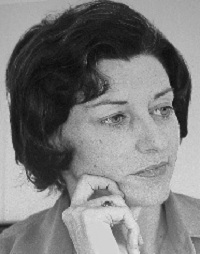 Anne Sexton
Anne Sexton
1928-1974
Anne Sexton (November 9, 1928-October 4, 1974, Weston, Massachusetts) was an American poet, known for her highly personal, confessional verse. She won the Pulitzer Prize for Poetry in 1967.
Sexton was born Anne Gray Harvey in Newton, Massachusetts, to Mary Gray Staples and Ralph Harvey. She spent most of her childhood in Boston. In 1945, she enrolled at Rogers Hall boarding school, Lowell, Massachusetts, later spending a year at Garland School. For a time, she modeled for Boston’s Hart Agency. On August 16, 1948, she married Alfred Sexton and they remained together until 1973.
Sexton suffered from severe mental illness for much of her life, her first manic episode taking place in 1954. After a second breakdown in 1955, she met Dr. Martin Orne, who became her long-term therapist at the Glenside Hospital and encouraged her to take up poetry.
She found early acclaim with her poetry; a number of her poems were accepted by The New Yorker, Harper’s Magazine and The Saturday Review.
In the late 1960s, the manic elements of Sexton’s illness began to affect her career, though she still wrote and published work and gave readings of her poetry. She also collaborated with musicians, forming a jazz-rock group called Her Kind that added music to her poetry. Her play, Mercy Street, was produced in 1969 after several years of revisions.
Within 12 years of writing her first sonnet, she was one of the most-honored poets in America: A Pulitzer Prize winner, a fellow of the Royal Society of Literature and the first female member of the Harvard chapter of Phi Beta Kappa.
On October 4, 1974, Sexton had lunch with poet Maxine Kumin to revise galleys of Sexton’s manuscript of The Awful Rowing toward God. On returning home, she put on her mother’s old fur coat, removed all her rings, poured herself a glass of vodka, locked herself in her garage and started the engine of her car, committing suicide by carbon monoxide poisoning.
Source: http://en.wikipedia.org/wiki/Anne_Sexton
 Bibliography
Bibliography
Press your browser’s BACK button to return to the previous page.
 Thomas Shadwell
Thomas Shadwell
1642-1692
Thomas Shadwell (c. 1642-November 19, 1692) was an English poet and playwright who was appointed Poet Laureate in 1689.
Shadwell was born at Stanton Hall, Norfolk, and educated at Bury St. Edmunds School and at Gonville and Caius College, Cambridge, which he entered in 1656. He left the university without a degree and joined the Middle Temple. At the Whig triumph in 1688, he superseded John Dryden as poet laureate and historiographer royal.
He died at Chelsea on November 19, 1692.
Source: http://en.wikipedia.org/wiki/Thomas_Shadwell
 Bibliography
Bibliography
Press your browser’s BACK button to return to the previous page.
 Tahir Shah
Tahir Shah
1966-
Tahir Shah (born November 16, 1966 in London) is an Anglo-Afghan Indian author, journalist and documentary maker. He lives in Casablanca, Morocco.
Shah was born into a distinguished family of Saadat who had their ancestral home at Paghman, not far from Kabul. His mother is of Indian Parsi ethnicity.
Born and brought up in Britain, Shah was encouraged from an early age to never follow the pack and to strive for originality. His father believed strongly that education was about more than school lessons and was something that continues after childhood throughout one’s life. This sense of a quest for knowledge colors all of Shah’s work, most notably his travel literature.
Shah was educated at Bryanston School, Dorset, England, and at universities in London, Nairobi and San Diego. He left London for Morocco in 2003. Today, he lives in Casablanca with his wife, Rachana, and their two children.
Shah is the author of more than a dozen books and several documentary films. He also writes introductions, academic pieces for journals and book reviews for newspapers such as The Washington Post.
Source: http://en.wikipedia.org/wiki/Tahir_Shah
 Bibliography
Bibliography
Press your browser’s BACK button to return to the previous page.
 William Shakespeare
William Shakespeare
1564-1616
William Shakespeare (baptized April 26, 1564-April 23, 1616) was an English poet and playwright, widely regarded as the greatest writer in the English language and the world’s pre-eminent dramatist. He was the son of John Shakespeare, an alderman and a successful glover originally from Snitterfield, and Mary Arden, the daughter of an affluent landowning farmer. He was born in Stratford-upon-Avon and baptized there on April 26, 1564. His actual birthdate remains unknown but is traditionally observed on 23 April, St. George’s Day.
Although no attendance records for the period survive, most biographers agree that Shakespeare was probably educated at the King’s New School in Stratford, a free school chartered in 1553, about a quarter-mile from his home. Grammar schools varied in quality during the Elizabethan era, but the grammar curriculum was standardized by royal decree throughout England and the school would have provided an intensive education in Latin grammar and the classics.
At the age of 18, he married Anne Hathaway, with whom he had three children: Susanna and twins, Hamnet and Judith. Between 1585 and 1592, he began a successful career in London as an actor, writer and part-owner of a playing company called the Lord Chamberlain’s Men, later known as the King’s Men.
Shakespeare produced most of his known work between 1589 and 1613. His early plays were mainly comedies and histories, genres he raised to the peak of sophistication and artistry by the end of the 16th century. He then wrote mainly tragedies until about 1608, including Hamlet, King Lear, Othello and Macbeth, considered some of the finest works in the English language. In his last phase, he wrote tragicomedies, also known as romances, and collaborated with other playwrights.
Many of his plays were published in editions of varying quality and accuracy during his lifetime. In 1623, two of his former theatrical colleagues published the First Folio, a collected edition of his dramatic works that included all but two of the plays now recognized as Shakespeare’s.
He appears to have retired to Stratford around 1613 at age 49, where he died three years later on April 23, 1616.
Source: http://en.wikipedia.org/wiki/William_Shakespeare
 Bibliography
Bibliography
Press your browser’s BACK button to return to the previous page.
 Ntozake Shange
Ntozake Shange
1948-2018
Ntozake Shange (born October 18, 1948) was an American playwright and poet. As a self-proclaimed Black feminist, much of the content of her work addresses issues relating to race and feminism.
She graduated from Trenton Central High School and, in 1966, enrolled at Barnard College. She graduated cum laude in American Studies, then earned a master’s degree in the same field from the University of Southern California in Los Angeles. In 1971, Shange changed her name. Ntozake means “she who has her own things” and Shange means “he/she who walks/lives with lions.”
In 1975, Shange moved to New York City, where in that year her first and most well-known play was produced: For Colored Girls Who Have Considered Suicide when the Rainbow Is Enuf. First produced off-Broadway, the play soon moved on to Broadway at the Booth Theater and won a number of awards, including the Obie Award, Outer Critics Circle Award and the AUDELCO Award. Later, Shange wrote a number of successful plays, including an adaptation of Bertolt Brecht’s Mother Courage and Her Children (1980), which won an Obie Award.
In 2003, Shange wrote and oversaw the production of Lavender Lizards and Lilac Landmines: Layla’s Dream while serving as a visiting artist at the University of Florida, Gainesville.
Individual poems, essays and short stories of hers have appeared in numerous magazines and anthologies, including The Black Scholar, Yardbird, Ms, Essence Magazine, The Chicago Tribune, VIBE and Third-World Women.
She also wrote Betsey Brown, a novel about an African-American girl who runs away from home.
Shange died in her sleep on October 27, 2018, aged 70, in an assisted-living facility in Bowie, Maryland.
Source: http://en.wikipedia.org/wiki/Ntozake_Shange
 Bibliography
Bibliography
Press your browser’s BACK button to return to the previous page.
 George Bernard Shaw
George Bernard Shaw
1856-1950
George Bernard Shaw (July 26, 1856-November 2, 1950) was an Irish playwright and a co-founder of the London School of Economics. Although his first profitable writing was music and literary criticism, in which capacity he wrote many highly articulate pieces of journalism, his main talent was for drama. Nearly all of his writings address prevailing social problems but have a vein of comedy that makes their stark themes more palatable. Shaw examined education, marriage, religion, government, health care and class privilege.
He was most angered by what he perceived as the exploitation of the working class. An ardent socialist, Shaw wrote many brochures and speeches for the Fabian Society. He became an accomplished orator in the furtherance of its causes, which included gaining equal rights for men and women, alleviating abuses of the working class, rescinding private ownership of productive land and promoting healthy lifestyles. For a short time, he was active in local politics, serving on the London County Council.
Shaw was born in Synge Street, Dublin, to George Carr Shaw, an unsuccessful grain merchant and sometime civil servant, and Lucinda Elizabeth Shaw, nee Gurly, a professional singer.
Shaw’s plays were first performed in the 1890s. By the end of the decade he was an established playwright. He wrote 63 plays and his output as novelist, critic, pamphleteer, essayist and private correspondent was prodigious. He is known to have written more than 250,000 letters.
He died at the age of 94, of renal failure precipitated by injuries incurred by falling while pruning a tree.
Source: http://en.wikipedia.org/wiki/George_Bernard_Shaw#Final_years
 Bibliography
Bibliography
Press your browser’s BACK button to return to the previous page.
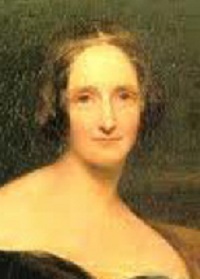 Mary Shelley
Mary Shelley
1797-1851
Mary Shelley was the British writer who penned the famous tale, Frankenstein, or The Modern Prometheus, in 1818.
Born on August 30, 1797, in London, England, Mary was the daughter of famed anarchist William Godwin and feminist Mary Wollstonecraft. She eloped with poet Percy Bysshe Shelley in 1814 and married him two years later.
Best known for her horror novel, Frankenstein, or the Modern Prometheus (1818), she wrote several others, including Valperga (1823), The Last Man (1826), the autobiographical Lodore (1835) and Mathilde, which was published posthumously in the 1950s.
Though her marriage to Shelley was riddled with adultery and heartache, including the death of two of their children, Mary worked tirelessly to promote her husband’s poetry after his early death in 1822. In addition to editing Shelley’s poems and other works, Mary wrote and published several travel books and journals.
Mary Shelley died of brain cancer on February 1, 1851, at age 53.
Source: http://www.biography.com/people/mary-shelley-9481497
 Bibliography
Bibliography
Press your browser’s BACK button to return to the previous page.
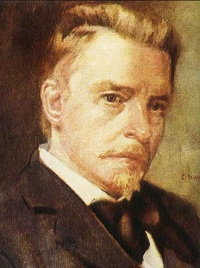 Percy Bysshe Shelley
Percy Bysshe Shelley
1792-1818
Percy Bysshe Shelley was born on August 4, 1792, the first of seven children born to Timothy Shelley, a country squire who became a baronet in 1815 upon the death of his father, Sir Bysshe Shelley. Percy attended Sion House Academy from 1802-04 and then Eton. Although University College, Oxford, where he enrolled in 1810, came as something of a relief, within a few months he was expelled along with his friend Thomas Jefferson Hogg for refusing to acknowledge or deny authorship of a pamphlet entitled “The Necessity of Atheism.”
His father visited him in London after his expulsion, insisting that he renounce his friend Hogg and his beliefs, which included atheism, vegetarianism, free love and political radicalism; Shelley refused. The resulting estrangement from his father was completed when Shelley eloped with Harriet Westbrook, the 16-year-old daughter of a coffee-house keeper.
Shelley now sought a vocation: He went to Ireland for a few months to campaign for political reform; his poem, “Queen Mab,” appeared in 1813. The following year, he met his hero, William Godwin, the author of Political Justice, and fell in love with his daughter, Mary, a radical and an idealist like himself. Mary and Percy eloped to Switzerland in July 1814.
An inheritance from his grandfather of £1000 per annum in 1815 alleviated Shelley’s financial difficulties, which were often caused by his generosity to others, but his domestic situation became very complex: Harriet, who had already given him a daughter, Ianthe, bore a son, Charles, on Nov. 30, 1814, after Shelley had been living with Mary for several months. A few months later, on February 22, 1815, Mary bore a daughter, who lived only a few days, and in January 1816 their son, William, was born. In 1816, Harriet (apparently pregnant by another man) drowned herself. Shelley married Mary in December and, in 1818, the Shelleys left England for Italy, where their infant daughter, Clara, and then their son, William, died and where Percy Florence was born.
Returning by sailing yacht from a peacemaking mission on behalf of Lord Byron to Claire Clairmont, Shelley drowned at sea during a fierce storm.
Source: http://www.victorianweb.org/previctorian/shelley/bio.html
 Bibliography
Bibliography
Press your browser’s BACK button to return to the previous page.
 Sam Shepard
Sam Shepard
1943-2017
Samuel Shepard Rogers (November 5, 1943-July 27, 2017) was born in Fort Sheridan, Illinois. He worked as a stable hand, herdsman, orange picker, sheep shearer, bus boy, waiter and musician before beginning his career as a playwright in New York in 1964 with the Theatre Genesis production of two one-act plays, Cowboys and The Rock Garden, at St. Mark’s Church-in-the-Bowery.
His first full-length play, La Turista, was performed at the American Place Theatre and won an Obie in 1967, followed by The Tooth of Crime (1972), Curse of the Starving Class (1978) and Fool for Love (1982).
Shepard spent several successful seasons with off-off-Broadway groups such as La Mama and Caffe Cino and was playwright-in-residence at the Magic Theatre in San Francisco for a number of years. In 1979, he was awarded the Pulitzer Prize for Drama for Buried Child and, in 1984, he earned an Oscar nomination for his part as Chuck Yeager in The Right Stuff.
Other plays by Sam Shepard include: Mad Dog Blues (1971), True West (1980), A Lie of the Mind (1985), Simpatico (1993) and Eyes for Consuela (1998). His screenplay for Paris, Texas, won the Golden Palm Award at the 1984 Cannes Film Festival.
In 1986, he was elected to the American Academy of Arts and Letters and, in 1992, he received the Gold Medal for Drama from the Academy. In 1994, he was inducted into the Theatre Hall of Fame.
Shepard died on July 27, 2017, at his home in Kentucky, aged 73, from complications of amyotrophic lateral sclerosis.
Source: http://www.imagi-nation.com/moonstruck/clsc41.html
 Bibliography
Bibliography
Press your browser’s BACK button to return to the previous page.
 Thomas Shepard
Thomas Shepard
1605-1649
Thomas Shepard (November 5, 1605-August 25, 1649) was an American Puritan minister and a significant figure in early colonial New England.
Shepard was born in Towcester, Northamptonshire, England. His devout mother died when he was four and he lived a difficult life under his stepmother. His father died when he reached 10, at which point he lived with his grandparents and later an older brother, whom he held in high and grateful regard. A schoolmaster ignited in him a scholarly interest, which ultimately led to entry into Emmanuel College in Cambridge University at the age of 15. He accounts in his autobiography that he lived a dissatisfied and dissolute life, which led him to pray in a nearby field, at which point he underwent the beginnings of a conversion experience.
In 1627, he became assistant schoolmaster at Earls Colne Grammar School in Earls Colne, Essex. He became a minister whose sermons and Puritan ways drew the ire of Church of England Archbishop William Laud, and he was forbidden to preach. Following the death of his eldest son, he left England in 1635 with his wife and younger son on a difficult voyage for Massachusetts in colonial America. His wife died thereafter, as did his second wife and other children, though he framed these experiences, if not without difficulty, into the perspective of his theology.
Shepard died of quinsy, a peritonsillar abscess, which is a complication of tonsillitis, at the age of 44.
Source: http://en.wikipedia.org/wiki/Thomas_Shepard_%28minister%29
 Bibliography
Bibliography
Press your browser’s BACK button to return to the previous page.
 Richard Brinsley Sheridan
Richard Brinsley Sheridan
1751-1816
Richard Brinsley Butler Sheridan (October 30, 1751-July 7, 1816) was an Irish-born playwright and poet and long-term owner of the London Theatre Royal, Drury Lane. For 32 years, he was also a Whig Member of the British House of Commons for Stafford (1780-1806), Westminster (1806-1807) and Ilchester (1807-1812). He is known for his plays, such as The Rivals, The School for Scandal and A Trip to Scarborough.
Sheridan was born in 1751 in Dublin, Ireland. The family moved permanently to England in 1758 when he was age seven. He was a pupil at Harrow School outside London from 1762 to 1768. His mother, Frances Sheridan, was a playwright and novelist. She had two plays produced in London in the early 1760s, though she is best known for her novel, The Memoirs of Sidney Biddulph (1761). His father, Thomas Sheridan, was for a while an actor-manager at the Smock Alley Theatre but, following his move to England in 1758, he gave up acting and wrote a number of books concerning education and, especially, the standardization of the English language in education.
In 1773, at age 21 Sheridan married Elizabeth Ann Linley, set up house and began writing for the stage. Less than two years later, in 1775, his first play, The Rivals, was produced at London’s Covent Garden Theatre. Shortly after the success of The Rivals, Sheridan and his father-in-law, Thomas Linley the elder, a successful composer, produced the opera, The Duenna.
In 1776, Sheridan, his father-in-law and one other partner bought a half-interest in the Drury Lane Theatre and, two years later, bought out the other half. Sheridan was the manager of the theatre for many years and later became sole owner with no managerial role.
His most famous play, The School for Scandal, premiered in 1777. In 1778, Sheridan wrote The Camp, followed in 1779 by The Critic.
In 1780, Sheridan entered Parliament as the ally of Charles James Fox on the side of the American Colonials in the political debate of that year. He is said to have paid the burgesses of Stafford five guineas apiece for the honor of representing them. As a consequence, his first speech in Parliament had to be a defense against the charge of bribery. He held the posts of Receiver-General of the Duchy of Cornwall (1804-1807) and Treasurer of the Navy (1806-1807). When he failed to be re-elected to Parliament in 1812, after 32 years, his creditors closed in on him and his last years were harassed by debt and disappointment.
In December 1815, he became ill, largely confined to bed. Sheridan died in poverty on July 7, 1816, and was buried in the Poets’ Corner of Westminster Abbey.
Source: http://en.wikipedia.org/wiki/Richard_Brinsley_Sheridan
 Bibliography
Bibliography
Press your browser’s BACK button to return to the previous page.
 John and Elizabeth Sherrill
John and Elizabeth Sherrill
1923-2017/1928-
John L. Sherrill (born 1923, Covington, Tennessee; died December 2, 2017) and Elizabeth Sherrill (born 1928, Hollywood, California) are Christian writers. They have co-authored a number of bestselling books, including: God’s Smuggler, with Brother Andrew; The Hiding Place, with Corrie ten Boom; and The Cross and the Switchblade, with David Wilkerson.
From 1944 to 1951, John Sherrill was a freelance writer in Europe. John and Elizabeth Sherrill met aboard ship on their way to Europe and were married in Switzerland in 1947. From 1947 to 1963, Elizabeth was a freelance writer for magazines. In 1970, they founded a publishing company, Chosen Books, dedicated to developing new Christian writers. Their first title was Born Again by Charles Colson.
Elizabeth has authored more than 30 books, many co-written with her husband.
John Sherrill died on December 2, 2017, aged 94.
Source: http://en.wikipedia.org/wiki/John_and_Elizabeth_Sherrill
 Bibliography
Bibliography
Press your browser’s BACK button to return to the previous page.
 James Shirley
James Shirley
1596-1666
James Shirley (or Sherley; September 1596-October 29, 1666) was an English dramatist. His career of playwriting extended from 1625 to the suppression of stage plays by Parliament in 1642.
Shirley was born in London. He was educated at Merchant Taylors’ School, London, St. John’s College, Oxford, and St. Catharine’s College, Cambridge, where he took his B.A. degree in or before 1618.
His first poem, “Echo, or the Unfortunate Lovers” (of which no copy is known, but which is probably the same as “Narcissus” of 1646), was published in 1618. After earning his M.A., he was “a minister of God’s word in or near St. Albans.” Apparently in consequence of his conversion to the Roman Catholic faith, he left his living and was master of St. Albans School from 1623-25. His first play, Love Tricks, seems to have been written while he was teaching at St. Albans. He moved in 1625 to London, where he lived in Gray’s Inn, and for 18 years from that time he was a prolific writer for the stage, producing more than 30 regular plays, tragedies, comedies and tragicomedies and showing no sign of exhaustion when a stop was put to his occupation by the Puritan edict of 1642.
Shirley’s sympathies were with the king in his disputes with Parliament and he received marks of special favor from the queen. He made a bitter attack on William Prynne, who had attacked the stage in Histriomastix and when, in 1634, a special masque was presented at Whitehall by the gentlemen of the Inns of Court as a practical reply to Prynne, Shirley supplied the text, The Triumph of Peace. During a stay in Dublin, Shirley wrote The Doubtful Heir, The Royal Master, The Constant Maid and St. Patrick for Ireland.
On the outbreak of the English Civil War, he seems to have served with the Earl of Newcastle but, when the king’s fortunes began to decline, he returned to London. He owed something to the kindness of Thomas Stanley, but supported himself chiefly by teaching, publishing some educational works under the Commonwealth. Besides these, he published during the period of dramatic eclipse four small volumes of poems and plays, in 1646, 1653, 1655 and 1659.
Shirley died as a consequence of the Great Fire of London and was buried at St. Giles in the Fields on October 29, 1666.
Source: http://en.wikipedia.org/wiki/James_Shirley
 Bibliography
Bibliography
Press your browser’s BACK button to return to the previous page.
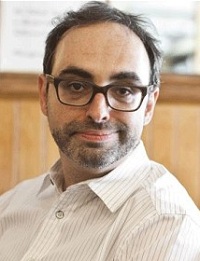 Gary Shteyngart
Gary Shteyngart
1972-
Gary Shteyngart (born Igor Shteyngart; July 5, 1972) is an American writer born in Leningrad, USSR. Much of his work is satirical and relies on the invention of elaborately fictitious yet somehow familiar places and times.
Shteyngart spent the first seven years of his childhood living in a square dominated by a huge statue of Vladimir Lenin in what is now St. Petersburg, Russia. He comes from a Jewish family and describes his family as typically Soviet. His father worked as an engineer in a LOMO camera factory; his mother was a pianist. Shteyngart emigrated to the United States in 1979 and was brought up with no television in the apartment in which he lived, where English was not the household language. He did not shed his thick Russian accent until the age of 14.
Shteyngart took a trip to Prague and this experience helped spawn his first novel, set in the fictitious European city of Prava. He is a graduate of Stuyvesant High School in New York City, Oberlin College in Ohio, where he earned a degree in politics, and Hunter College of the City University of New York, where he earned an M.F.A. in Creative Writing.
Shteyngart’s novels include: The Russian Debutante’s Handbook (2002); Absurdistan (2006); and Super Sad True Love Story (2010). His other writing has appeared in The New Yorker, Slate, Granta, Travel and Leisure and The New York Times.
Shteyngart now lives in the Lower East Side of Manhattan. He has taught writing at Hunter College and currently teaches writing at Columbia University and Princeton University.
Source: http://en.wikipedia.org/wiki/Gary_Shteyngart
 Bibliography
Bibliography
Press your browser’s BACK button to return to the previous page.
 Nevil Shute
Nevil Shute
1899-1960
Nevil Shute Norway (January 17, 1899-January 12, 1960) was a popular British-Australian novelist and a successful aeronautical engineer. He used his full name in his engineering career and “Nevil Shute” as his pen name in order to protect his engineering career from any potential negative publicity in connection with his novels.
Born in Somerset Road, Ealing, London, he was educated at the Dragon School, Shrewsbury School and Balliol College, Oxford. Shute’s father, Arthur Hamilton Norway, became head of the post office in Ireland before World War I and was based at the main post office in Dublin in 1916 at the time of the Easter Rising. His son was later commended for his role as a stretcher-bearer during the rising. Shute attended the Royal Military Academy, Woolwich, but because of his stammer was unable to take up a commission in the Royal Flying Corps, instead serving in World War I as a soldier in the Suffolk Regiment. An aeronautical engineer as well as a pilot, he began his engineering career with de Havilland Aircraft Company but, dissatisfied with the lack of opportunities for advancement, he took a position in 1924 with Vickers Ltd., where he was involved with the development of airships.
By the outbreak of World War II, Shute was already a rising novelist. Even as war seemed imminent, he was working on military projects with his former Vickers boss, Sir Dennistoun Burney. He joined the Royal Naval Volunteer Reserve as a sub-lieutenant and quickly ended up in what would become the Directorate of Miscellaneous Weapons Development. There, he was a department head, working on secret weapons such as Panjandrum, a job that appealed to the engineer in him. His celebrity as a writer caused the Ministry of Information to send him to the Normandy landings on June 6, 1944, and later to Burma as a correspondent. He finished the war with the rank of Lieutenant-Commander, R.N.V.R.
Shute died in Melbourne in 1960 after a stroke.
Source: http://en.wikipedia.org/wiki/Nevil_Shute
 Bibliography
Bibliography
Press your browser’s BACK button to return to the previous page.
 Philip Sidney
Philip Sidney
1554-1586
Sir Philip Sidney was born on November 30, 1554, at Penshurst, Kent. He was the eldest son of Sir Henry Sidney, Lord Deputy of Ireland, and nephew of Robert Dudley, Earl of Leicester. He was named after his godfather, King Philip II of Spain.
After private tutelage, Sidney entered Shrewsbury School at the age of 10 in 1564, on the same day as Fulke Greville, Lord Brooke, who became his fast friend and, later, his biographer. After attending Christ Church, Oxford (1568-1571), he left without taking a degree in order to complete his education by travelling the continent. Among the places he visited were Paris, Frankfurt, Venice and Vienna.
Sidney returned to England in 1575, living the life of a popular and eminent courtier. In 1577, he was sent as ambassador to the German Emperor and the Prince of Orange. Officially, he had been sent to condole the princes on the deaths of their fathers. His real mission was to feel out the chances for the creation of a Protestant league. But his budding diplomatic career was cut short because Queen Elizabeth I found Sidney to be perhaps too ardent in his Protestantism, the queen preferring a more cautious approach.
Upon his return, Sidney attended the court of Elizabeth I and was considered “the flower of chivalry.” He was also a patron of the arts, actively encouraging such authors as Edward Dyer, Greville and, most importantly, the young poet Edmund Spenser, who dedicated “The Shepheardes Calender” to him. In 1580, he incurred the Queen Elizabeth’s displeasure by opposing her projected marriage to the Duke of Anjou, Roman Catholic heir to the French throne, and was dismissed from court for a time. He left the court for the estate of his cherished sister, Mary Herbert, Countess of Pembroke. During his stay, he wrote the long pastoral romance, “Arcadia.”
At some uncertain date, he composed a major piece of critical prose that was published after his death under the two titles, The Defence of Poesy and An Apology for Poetry. Sidney’s “Astrophil and Stella” (“Starlover and Star”) was begun probably around 1576.
While Sidney’s career as courtier ran smoothly, he was growing restless with lack of appointments. In 1585, he made a covert attempt to join Sir Francis Drake’s expedition to Cadiz without Queen Elizabeth’s permission. Elizabeth instead summoned Sidney to court and appointed him governor of Flushing in the Netherlands. In 1586, Sidney, along with his younger brother, Robert Sidney, another poet in this family of poets, took part in a skirmish against the Spanish at Zutphen and was wounded by a musket shot that shattered his thigh bone. Some 22 days later, Sidney died of the unhealed wound at not yet 32 years of age.
Source: http://www.luminarium.org/renlit/sidbio.htm
 Bibliography
Bibliography
Press your browser’s BACK button to return to the previous page.
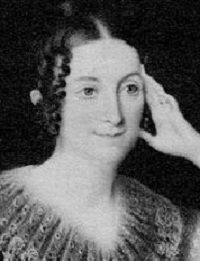 Lydia Sigourney
Lydia Sigourney
1791-1865
Lydia Huntley Sigourney (September 1, 1791-June 10, 1865), nee Lydia Howard Huntley, was a popular American poet during the early and mid-19th century. She was commonly known as the “Sweet Singer of Hartford.” Most of her works were published with just her married name, Mrs. Sigourney.
Sigourney was born in Norwich, Connecticut, to Ezekiel Huntley and Zerviah Wentworth. Their only child, she was named after her father’s first wife, Lydia Howard, who had died soon after marrying Ezekiel. She was educated in Norwich and Hartford. After teaching in a private school for young ladies in Norwich, she headed a similar institution in Hartford from 1814 until 1819.
When she was quite young, one of her neighbors, the Widow Lathrop, was friendly with her and encouraged her to develop. After Lathrop died, Sigourney was sent to visit Mrs. Jeremiah Wadsworth, an acquaintance of Lathrop in Hartford, Connecticut. This visit put her in contact with Daniel Wadsworth, who helped her set up a school for girls, arranging for daughters of his friends to attend. In 1815, he also helped her publish her first work, Moral Pieces in Prose and Verse, arranging the publishing and performing the initial editing himself. Sigourney described Wadsworth as her “kind patron” and says that he “took upon himself the whole responsibility of contracting publishers, gathering subscriptions and even correcting the proof sheets.” She goes on to say that “He delighted in drawing a solitary mind from obscurity into a freer atmosphere and brighter sunbeam.”
On June 16, 1819, she married Charles Sigourney and then chose to write anonymously in her “leisure” time. It was not until her parents were in dire need and her husband had lost some of his former affluence that she began to write as an occupation. When she was referred to as the probable author of the anonymous Letters to Young Ladies, by a Lady, she admitted authorship and began to write openly as Mrs. Sigourney. During these years she also published her first book, Moral Pieces, in Prose and Verse.
She continued to write throughout her married life, at first donating the proceeds of her publications to various reform groups such as the temperance movement, peace societies and missionary groups. When her husband’s prosperity began to decline in the 1830s, she sold her stories and poems to periodicals and, abandoning anonymity, Sigourney embraced her rapidly growing literary celebrity.
Her poems appeared in magazines and gift books as well as in her own collected volumes. She rarely departed from her trademark formula of pious and morbid themes tied together by catchy couplets. As a testament to her renown, Louis Godey paid her generously, not for editing his magazine but, rather, for allowing her name to appear alongside the names of the actual editors. A shrewd businesswoman, she continued to publish at the rate of a book a year throughout the 1850s.
She died in Hartford in 1865.
Sources: http://en.wikipedia.org/wiki/Lydia_Sigourney
and
http://www.librarycompany.org/women/portraits/sigourney.htm
 Bibliography
Bibliography
Press your browser’s BACK button to return to the previous page.
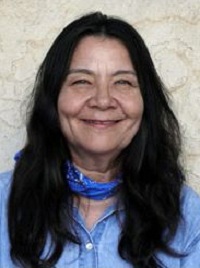 Leslie Marmon Silko
Leslie Marmon Silko
1948-
Leslie Marmon Silko (born Leslie Marmon on March 5, 1948) is a Native American writer of the Laguna Pueblo tribe and one of the key figures in the second wave of what Kenneth Lincoln has called “the Native American Renaissance.” She was one of the original recipients of the MacArthur Foundation Grant, later known as the “Genius Grant,” in 1981 and the Native Writers’ Circle of the Americas Lifetime Achievement Award in 1994.
She was born in Albuquerque, New Mexico, to photographer Leland Howard Marmon and Mary Virginia Leslie. She was educated at a Catholic school in Albuquerque and went on to receive a B.A. from the University of New Mexico in 1969. She briefly attended law school before leaving to pursue her literary career.
A short story written by Silko while still at school, “The Man to Send Rain Clouds,” was published and quickly garnered a great deal of praise, winning its author a National Endowment for the Humanities Discovery Grant. During the period 1968-1974, Silko wrote and published more short stories and many poems, most of which were later collected in her book, Laguna Woman.
Silko’s novel, Ceremony, was first published in 1977 to rave reviews. She was not to publish another full-length novel for more than a decade. In 1981, she brought out Storyteller, an interlinked collection of poems and short stories, and in 1986 she published Delicacy and Strength of Lace, a collected volume of her correspondence with her friend, James Wright.
It would take Silko 10 years to produce Almanac of the Dead, a massive volume published in 1991. A subsequent novel, Gardens in the Dunes (1999), weaves themes of women’s history, slavery, conquest and gardening.
Long a commentator on Native American affairs, Silko has published many nonfictional articles about Native American affairs and literature. Her two most famous essays are outspoken attacks on fellow writers. In “An Old-Fashioned Indian Attack in Two Parts,” Silko accused Gary Snyder of profiting from Indian culture, particularly in his collection, Turtle Island, the name and theme of which was taken from Pueblo mythology. In 1986, in a review of Anishinaabe writer Louise Erdrich’s novel, The Beet Queen, entitled “Here’s an Odd Artifact for the Fairy-Tale Shelf,” Silko claimed that the novelist had abandoned writing about the Native struggle for sovereignty in exchange for writing “self-referential,” postmodern fiction.
In 2010, Silko released The Turquoise Ledge: A Memoir.
Source: http://en.wikipedia.org/wiki/Leslie_Marmon_Silko
 Bibliography
Bibliography
Press your browser’s BACK button to return to the previous page.
 Steven David Justin Sills
Steven David Justin Sills
No biographical data available.
 Bibliography
Bibliography
Press your browser’s BACK button to return to the previous page.
 William Gilmore Simms
William Gilmore Simms
1806-1870
William Gilmore Simms (April 17, 1806-June 11, 1870) was a poet, novelist and historian from the American South whose novels achieved great prominence during the 19th century. He is also remembered for his strong support of slavery and for his opposition to Uncle Tom’s Cabin.
Simms was born in Charleston, South Carolina, of Scottish-Irish ancestors. His mother died during his infancy and his father failed in business and joined Coffee’s Indian fighters; as a result, Simms was brought up by his grandmother. In his teen years, he worked as a clerk in a drug store but began to study law at the age of 18. He married Anne Malcolm Giles in 1826. The bar of Charleston admitted him to practice in 1827, though he soon abandoned this profession.
He first wrote poetry at the age of eight and, when he was 19, he produced a monody on General Charles Cotesworth Pinckney (1825). Two years later, in 1827, Lyrical and Other Poems and Early Lays appeared. In 1828, he became a journalist as well as editor and part-owner of The City Gazette, a role he held until 1832 when the publication failed. Simms then devoted his attention entirely to writing and in rapid succession published: Tile Vision of Cones; Cain and Other Poems (1829); The Tricolor, or Three Days of Blood in Paris (1830); and his strongest poem, “Atalantis, a Tale of the Sea” (1832). “Atalantis” established his fame as an author. His novel, Martin Faber, the Story of a Criminal, an expanded version of an earlier short story called, “The Confessions of a Murderer,” was published in 1833 and made Simms known to a national audience.
Simms wrote a number of popular novels between 1830 and 1860, usually focusing on the pre-colonial and colonial periods of Southern history. These included such titles as: The Yemassee (1835); The Lily and the Totem, or The Huguenots in Florida (1850); Vasconselos (1853); and The Cassique of Kiawah (1859). Simms also wrote eight novels set in South Carolina during the American Revolutionary War, beginning with The Partisan (1835), which was likely Simms’ most-read novel, and Katherine Walton (1851). Other titles included: Mellichampe (1836); The Kinsmen (1841); The Forayers (1855); Eutaw (1856); and Joscelyn (1867). Finally, Simms wrote 10 novels dealing with the expansion into the frontier territory from Georgia to Louisiana, such as Richard Hurdis; or the Avenger of Blood, A Tale of Alabama (1838) and Border Beagles: A Tale of Mississippi (1840). In 1852, Simms published The Tennessean’s Story, his only full-length work of Southern humor. He also wrote poetry.
His History of South Carolina (1842) served for several generations as the standard school textbook on the state’s history. He also wrote enormously popular biographies of Revolutionary War heroes Francis Marion, Nathanael Greene and John Laurens, as well as John Smith and the Chevalier Bayard. Simms was also a popular lecturer on American history and accumulated one of the largest collections of Revolutionary War manuscripts. Unfortunately, most of this collection was lost when Sherman’s army burned his home during the Civil War.
Simms is also remembered today for his strong support of slavery and for his opposition to Harriet Beecher Stowe’s abolitionist novel, Uncle Tom’s Cabin, in response to which he wrote reviews and a book. His Anti-Tom novel was The Sword and the Distaff.
He died at his home at 13 Society Street in Charleston on June 11, 1870. He is buried in Magnolia Cemetery.
Source: http://en.wikipedia.org/wiki/William_Gilmore_Simms
 Bibliography
Bibliography
Press your browser’s BACK button to return to the previous page.
 Neil Simon
Neil Simon
1927-2018
Neil Simon (born July 4, 1927) was an American playwright and screenwriter. He was born in the Bronx, New York City, to Irving Simon, a garment salesman, and his wife, Mamie. He was their second son and grew up in Washington Heights, Manhattan, during the Great Depression. His father often abandoned the family, causing financial and emotional difficulties. He attended DeWitt Clinton High School and graduated at the age of 16.
He attended New York University briefly from 1944 to 1945, where he was enlisted in the U.S. Army Air Force Reserve training program. He was assigned to Lowry Air Force Base in 1945 and attended the University of Denver from 1945 to 1946. He was a sports editor for the military magazine, Rev-Meter.
In 1946, he was discharged as a corporal. Two years later, he quit his job as a mailroom clerk in the Warner Brothers offices in Manhattan to write radio and television scripts, including the radio series, The Robert Q. Lewis Show, and the television series, The Phil Silvers Show.
He was hired by Sid Caesar to write for his popular television comedy series, Your Show of Shows. Simon later incorporated some of his experiences into his play, Laughter on the 23rd Floor (1993). His work won him two Emmy Award nominations and the appreciation of Phil Silvers, who hired him to write for Sergeant Bilko during 1959. The first Broadway show Simon wrote was Catch a Star! (1955).
In 1961, Simon’s first Broadway play, Come Blow Your Horn, opened. Six weeks after its closing, his second production, the musical Little Me, opened to mixed reviews. He also won the 1991 Pulitzer Prize for Drama for Lost in Yonkers.
In 1966, Simon had four shows playing in Broadway theaters at the same time: Sweet Charity, The Star-Spangled Girl, The Odd Couple and Barefoot in the Park. His professional association with producer Emanuel Azenberg began with The Sunshine Boys in 1972 and continued with The Good Doctor, God’s Favorite, Chapter Two, They’re Playing Our Song, I Ought to Be in Pictures, Brighton Beach Memoirs, Biloxi Blues, Broadway Bound, Jake’s Women, The Goodbye Girl and Laughter on the 23rd Floor, among others.
While hospitalized for kidney failure, Simon died from pneumonia at New York–Presbyterian Hospital in Manhattan on August 26, 2018.
Source: http://en.wikipedia.org/wiki/Neil_Simon
 Bibliography
Bibliography
Press your browser’s BACK button to return to the previous page.
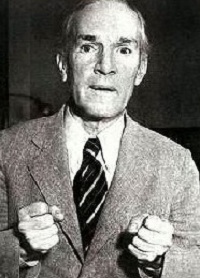 Upton Sinclair
Upton Sinclair
1878-1968
Upton Beall Sinclair was born on September 20, 1878, in Baltimore, Maryland, the only child of Priscilla Harden and Upton Beall Sinclair. His father struggled with various sales jobs but his alcoholism got in the way of many of his ventures. It was a tumultuous childhood for young Sinclair. At the age of 14, he enrolled in the City College of New York, writing dime novels and stories for magazines and newspapers to help pay for his tuition. It was here that he became acquainted with and embraced the Socialist Party’s politics.
After graduating from Columbia University, the Socialist journal, Appeal to Reason, commissioned him to write about stockyard workers. Armed with a pen and camera, he spent weeks researching: The Jungle was first serialized in Appeal to Reason in 1905. Readers avidly followed it but publishers were wary of the explosive content. After a handful of rejections, Doubleday published it in 1906. Sinclair wrote many more novels and plays, but none reached the popularity of The Jungle. Encouraged by its success, Sinclair founded a socialist commune in Englewood, New Jersey, but fire destroyed it a year later.
In 1900, Sinclair married Meta Fuller, with whom he had a son, David (1901-2007), who became a renowned research physicist. Meta left her husband in 1911 for poet Harry Kemp and she and Sinclair were soon divorced. In 1913, Sinclair married his second wife, author Mary Craig Kimborough (1883-1961). They moved to California and both became actively involved in politics, organizing the socialist reform movement, End Poverty in California (EPIC). He ran for Democratic nominee for Governor of California in 1934 amid roiling controversy. After a happy marriage of almost 50 years, Mary suffered a stroke and died in 1961. At the age of 83, Sinclair was married a third time, to Mary Elizabeth Willis (1882-1967).
Upton Sinclair died on November 25, 1968, and now rests in the Rock Creek Cemetery of Washington, D.C.
Source: http://www.online-literature.com/upton_sinclair/
 Bibliography
Bibliography
Press your browser’s BACK button to return to the previous page.
 John Skelton
John Skelton
1460-1529
Of John Skelton’s date or location of birth, there is no certainty. He was born in the early 1460s and his family may have originated in Yorkshire. He began his education at the University of Cambridge, from whence he moved to the University of Oxford. He was advanced to the title of “poet laureate” (a higher degree in rhetoric) at Oxford in 1488. The title of laureate was also conferred on him by the University of Louvain in 1492 and by Cambridge in 1493.
Gaining fame as a rhetorician and a translator, Skelton entered into the service of Henry VII in late 1488. The first work that can reliably be attributed to him is the “Elegy on the Death of the Earl of Northumberland” (1489). By this time, he had also completed his translation of Diodorus Siculus. Skelton became tutor to Prince Henry, later King Henry VIII, and served in this capacity from 1496 to 1501. Skelton wrote a book about pedagogy, entitled Speculum Principis (1501). This was one of many books of pedagogy written by Skelton, but the rest are since lost.
In 1498, Skelton was consecutively ordained subdeacon, deacon and priest of the Abbey of St. Mary Grace. In the autumn of the same year, he wrote The Bowge of Courte (rewards of court), a satire of court politics, printed in 1499 by Wynken de Worde. In 1501-1502, Skelton was involved in court disputes that led to a brief imprisonment for delinquency in a debt.
Skelton retired in about 1503 and became rector of the parish church in Diss, Norfolk, as the reward for his services. He stayed in residence there until 1512. Around 1505, Skelton wrote “Phyllyp Sparrowe,” the lament of a young woman for her pet bird. In 1509, Skelton wrote “A Lawde and Prayse Made for Our Souereigne Lord the Kyng” and, in 1512, an elegy in Latin for Henry VII at the request of the abbot of Westminster.
In 1512, he returned to court and received the title “Orator regius,” King’s Orator, from Henry VIII. In the following years, he wrote several poems on the defeat of the French, the Scots and James IV. The only surviving dramatic work by Skelton, Magnyfycence, was written sometime around 1515-16. He began his attacks on Cardinal Wolsey shortly after 1518. These included “Speak, Parrot” (1521?), “Colin Clout” (1521-22) and “Why Come Ye Not to Court?” (1522). Skelton’s apologetic and autobiographical “The Garland of Laurel” (1523) appeared after he had made peace with Wolsey. In it, Skelton lists many works written by himself, which appear to have been lost. Skelton’s last poem, “A Replycacion” (1527), is a rebuke against two Cambridge graduates for succumbing to heretical opinions.
Skelton died peacefully on June 21, 1529.
Source: http://www.luminarium.org/renlit/skelbio.htm
 Bibliography
Bibliography
Press your browser’s BACK button to return to the previous page.
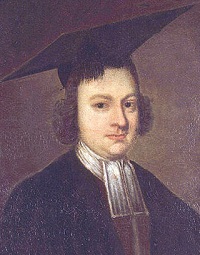 Christopher Smart
Christopher Smart
1722-1771
Christopher Smart, English poet, son of Peter Smart, of an old north country family, was born at Shipbourne, Kent, on April 11, 1722. Smart received his first schooling at Maidstone and then at the grammar school of Durham. He spent part of his vacations at Raby Castle and his gifts as a poet gained him the patronage of the Vane family. Henrietta, duchess of Cleveland, allowed him a pension of £40 that was paid until her death in 1742.
At Cambridge, where he was entered at Pembroke College in 1739, he spent much of his time in taverns and got badly into debt but, in spite of his irregularities, he became fellow of his college, praelector in philosophy and keeper of the common chest in 1745. In November 1747, he was compelled to remain in his rooms for fear of his creditors.
At Cambridge, he won the Seaton prize for a poem on “one of the attributes of the Supreme Being” in 1750 (he won the same prize in 1751, 1752, 1753 and 1755). A farce, A Trip to Cambridge, or the Grateful Fair, acted in 1747 by the students of Pembroke, was from his pen. In 1750, he contributed to The Student, or the Oxford and Cambridge Monthly Miscellany.
About 1752, he permanently left Cambridge for London and wrote under the pseudonym of “Mary Midnight” and “Pentweazle.” He had edited The Midwife, or the Old Woman’s Magazine (1751-1753), and had a hand in many other “Grub Street” productions. In 1756, he finished a prose translation of Horace. He agreed in the same year to produce a weekly paper, The Universal Visitor, for which Samuel Johnson wrote some numbers.
In 1751, Smart had shown symptoms of mental aberration, which developed into religious mania, and between 1756 and 1758 he was in an asylum. During his confinement, he conceived the idea of the single poem that has made him famous, “A Song to David.” After his release, Smart produced other religious poems, but none of them shows the same inspiration.
He died on May 21, 1771.
Source: http://www.luminarium.org/eightlit/smart/bio.php